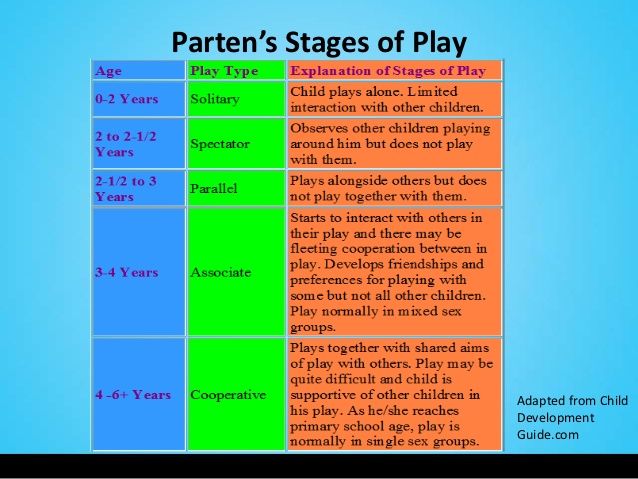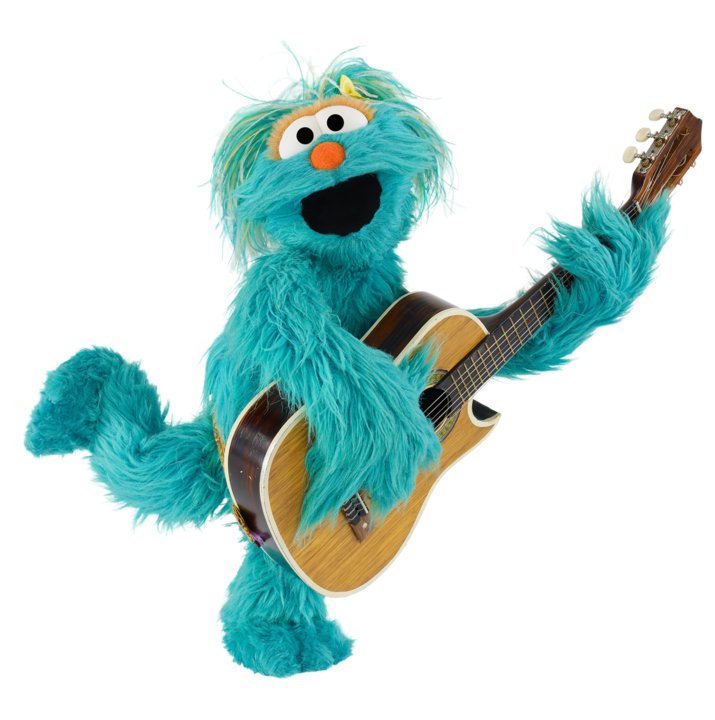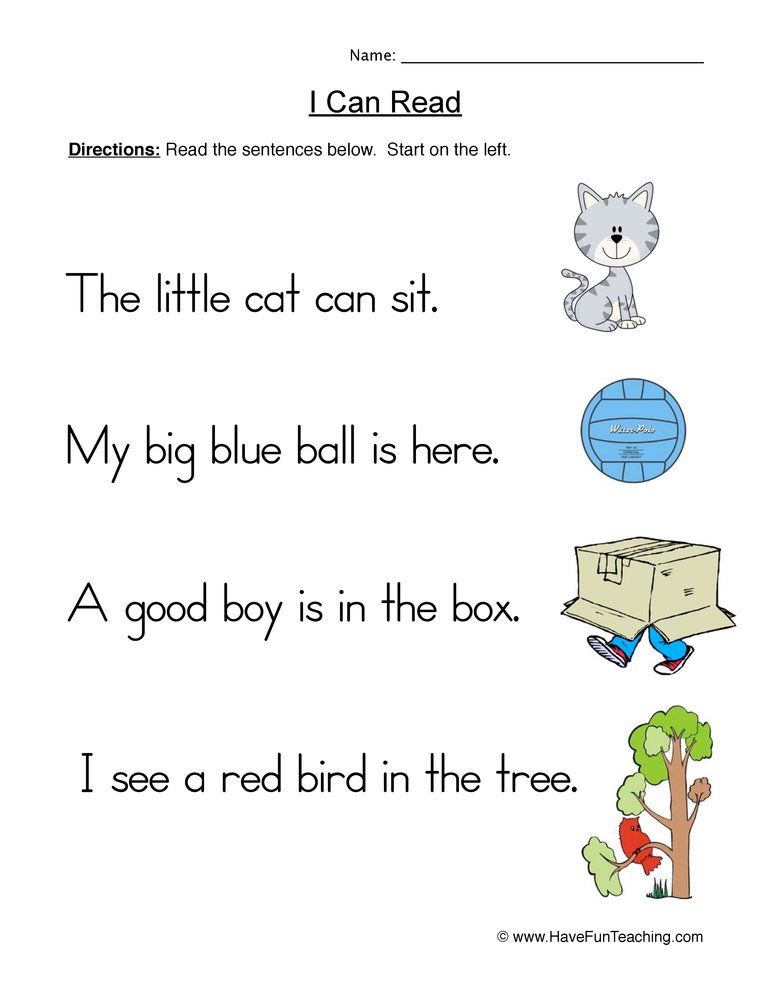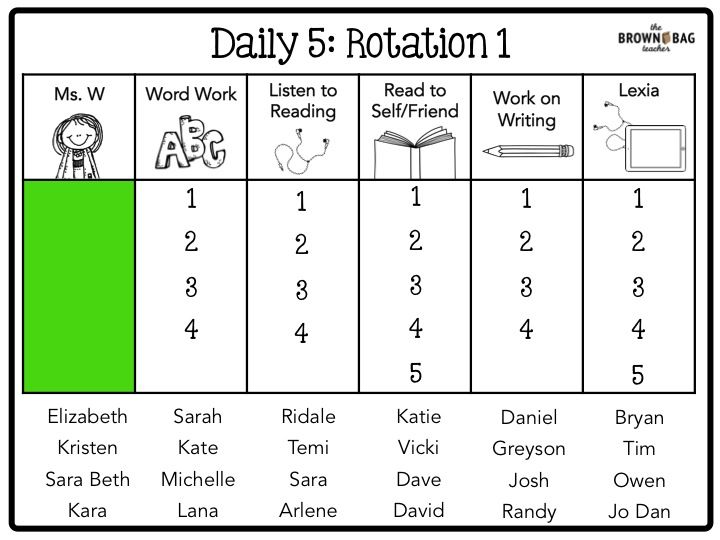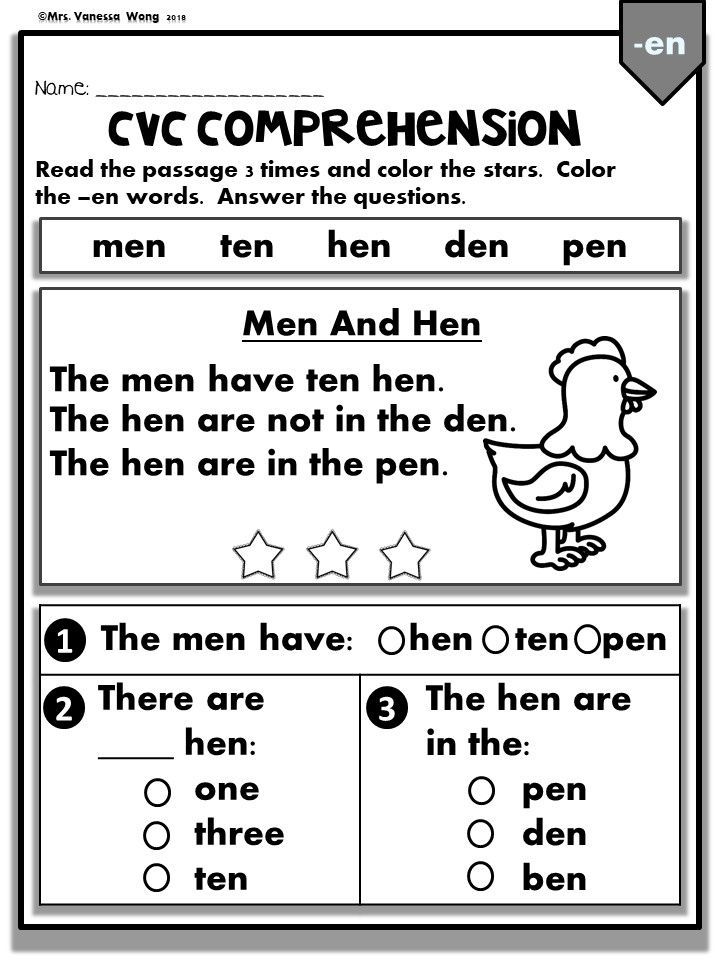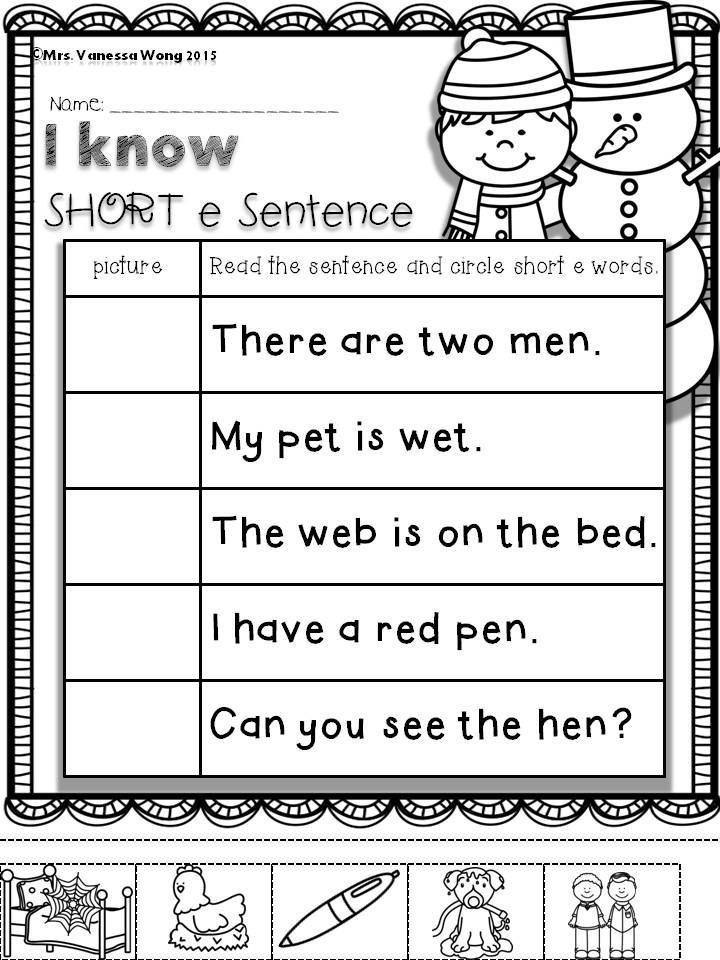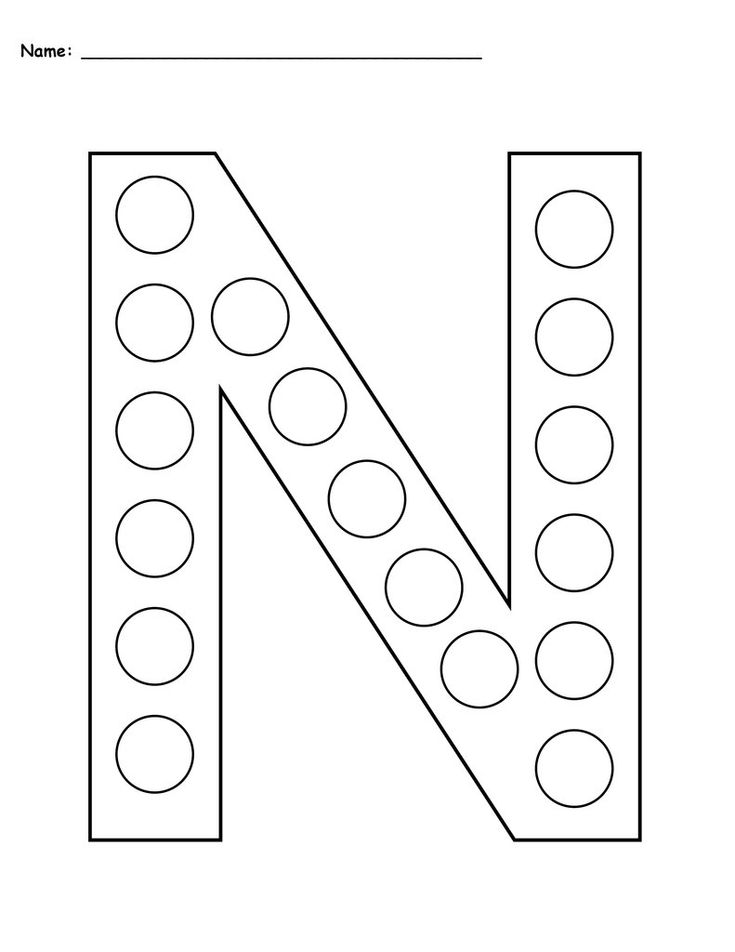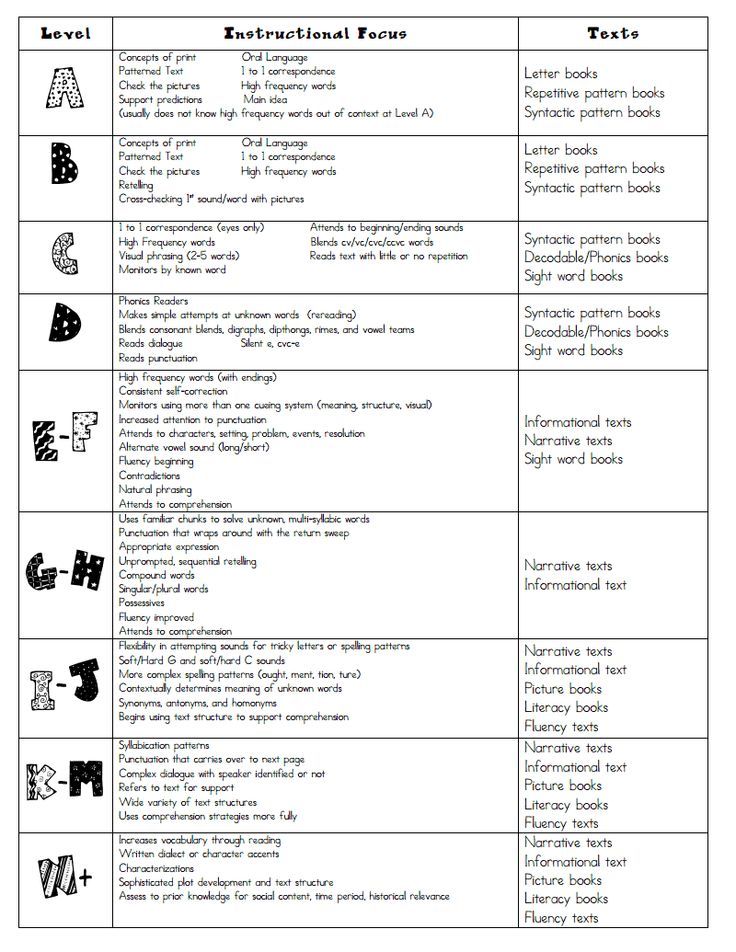Cooperative play child development
What Is Cooperative Play? Definition, Examples, and Benefits
As children grow, they move through distinct developmental stages that impact how they interact with the world and the people around them. While parents are often quick to note developmental milestones like learning to sit up or sleeping through the night, there are also important social milestones your child will move through.
One such milestone is reaching the cooperative stage of play. If you’re interested in learning more about the stages of play, read on!
Cooperative play is the last of the six stages of play described by sociologist Mildred Parten. Cooperative play involves children playing and working with others towards a common goal or purpose.
Being able to participate in cooperative play is extremely important. It means that your child has the skills they’ll need later to collaborate and cooperate at school and in other typical social settings, like sports.
Cooperative play doesn’t happen overnight though. Before your child reaches this stage, you should expect to see them move through five earlier stages of play.
Unoccupied play
Unoccupied play, the first stage, is when an infant begins to experience the world through their senses. They move their body and interact with objects simply because it’s interesting or because it feels good.
At this stage, your little one enjoys things with interesting textures and patterns or items that they can touch or see.
Solitary play
After unoccupied play, children move into the independent or solitary play stage. During this stage, a child will play on their own with little to no regard to what other adults or kids around them are doing.
During this stage, your child might stack and knock over blocks, line up or move around objects, flip through a book, or enjoy shaking a noise maker or other similar toy.
Onlooker play
During the onlooker play stage children will observe the play of other kids while not actually playing themselves.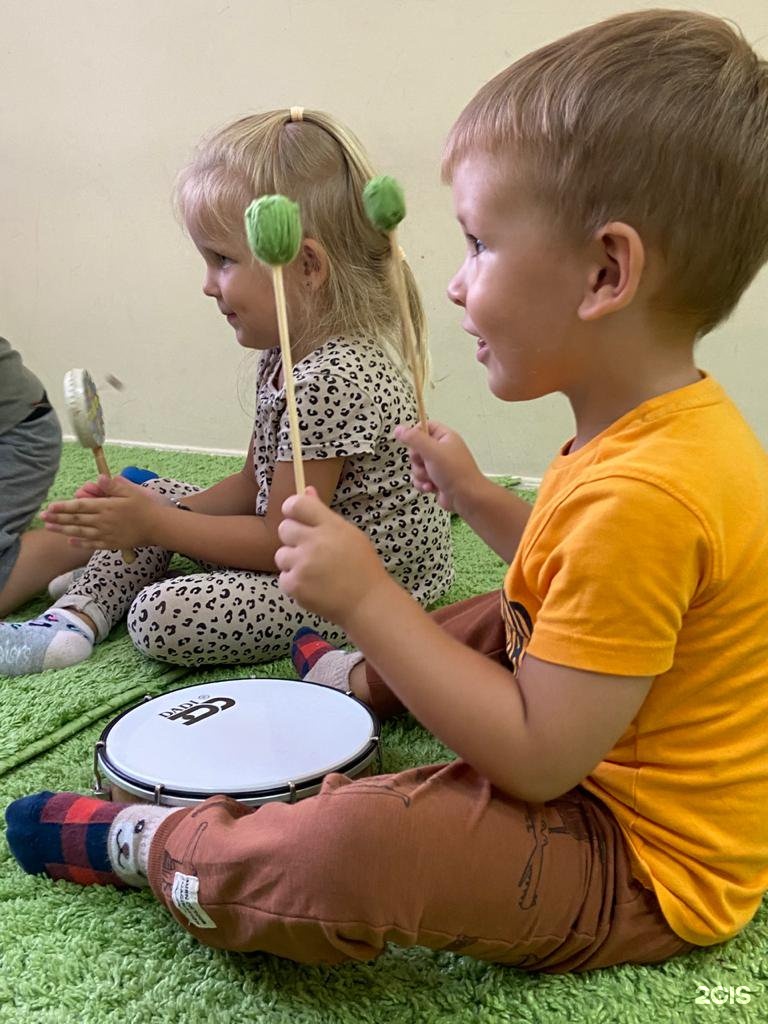 Motivated by an intense curiosity, little ones might sit and observe others for long periods of time without trying to jump in and play.
Motivated by an intense curiosity, little ones might sit and observe others for long periods of time without trying to jump in and play.
During this stage your child is observing how play “works” and learning the skills they’ll need to jump in when they feel ready.
Parallel play
After mastering onlooker play, a child will be ready to move into parallel play. During parallel play, children will play beside and in proximity to other children without actually playing with them. Children often enjoy the buzz that comes with being around other kids, but they don’t yet know how to step into others’ games or ask other kids to step into their games.
You may feel awkward when you head to a playdate and it seems like your child ignores the other children, but often they’re just engaging in an earlier play stage like this one.
Associative play
The final stage of play prior to cooperative play is associative play. During associative play, children will play with one another but don’t organize their play toward a common goal. Kids might be talking, laughing, and playing together but have totally different ideas about the outcome of the game they’re each playing.
Kids might be talking, laughing, and playing together but have totally different ideas about the outcome of the game they’re each playing.
Your child and their friends may all be playing a game that involves cooking, but one may be a chef, one may be a daddy cooking dinner, and one may be making a snack for their dinosaur.
Cooperative play
Finally, after lots of practice communicating and collaborating, a child moves into the final stage of play, cooperative play.
You will notice your child has moved on to cooperative play when they can communicate desired outcomes with others and collaborate towards a common goal with each person having a distinct role to play.
While every child is different and will move through the stages of play at a different pace, in general, kids begin to engage in cooperative play between the ages of 4 and 5.
The ability to play cooperatively depends on your child’s ability to learn and exchange ideas and assign and accept roles in their play.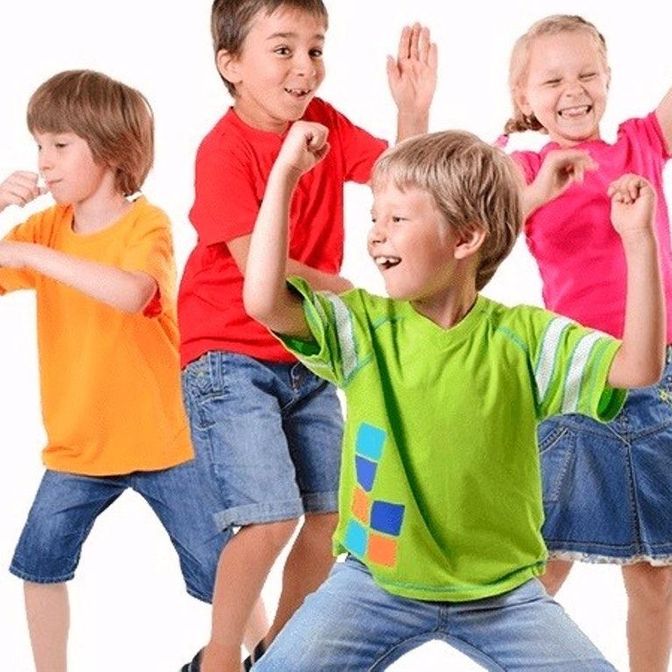 Typically, children under 4 are not yet ready to share their toys for the sake of a game, to respect the property rights of other children, or to understand the importance of rules and bounds within a game.
Typically, children under 4 are not yet ready to share their toys for the sake of a game, to respect the property rights of other children, or to understand the importance of rules and bounds within a game.
You can encourage cooperative play by example. Play games that require taking turns, discuss assigning roles within play, and encourage communication and feedback.
Cooperative play allows children to work together towards a common goal instead of in opposition to one another or in pursuit of winning. Parents and caregivers can foster cooperative play by creating an environment with tools and games kids can use to work cooperatively.
Outdoors, children can work together to rake leaves, build a snow fort, or plant and tend to a garden. Children can also collaborate to use playground equipment or outside toys in a way that ensures that everyone gets the opportunity to play, like rotating between the slide, the swings, and the monkey bars.
Indoors, children can construct buildings and cities from boxes or blocks together or use figurines and dolls to act out shared stories.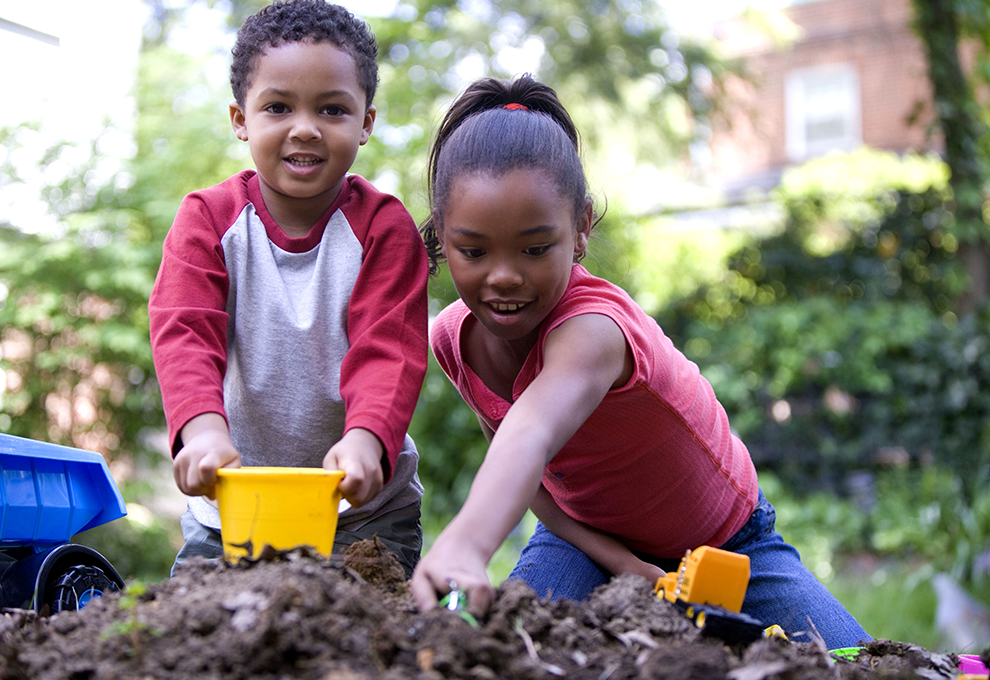 Children can also recreate scenarios they see in their everyday life, such as playing grocery store, doctor’s office, or veterinarian.
Children can also recreate scenarios they see in their everyday life, such as playing grocery store, doctor’s office, or veterinarian.
At this stage, children may also begin to enjoy more organized card or board games that allow them to work towards a common goal or point total. They may also enjoy collaborative work like building a puzzle together or painting a mural.
Encouraging your child to participate in cooperative play is important for fostering their long term social development. During cooperative play they can learn and develop a number of life skills that will help them get along with others and move through the world successfully.
During cooperative play children learn:
Cooperation
Cooperation is an essential life skill that children will use at home, at school, and in the community as they grow.
Play that fosters a sense of cooperation in kids shows them that working together allows them to have more fun and more readily reach their goal than working or playing independently.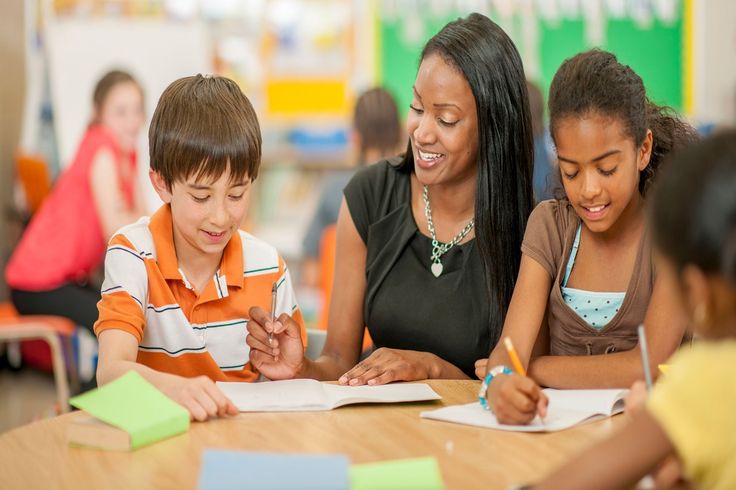
Communication
During cooperative play children must express their needs and desires as well as hear and respect the needs and desires of others. Kids learn that if they don’t communicate or listen effectively, their play simply won’t be as fun.
As kids continue to grow and develop, they refine their communication skills through play and carry these skills into different parts of their lives.
Empathy
During cooperative play kids each have a distinct role to play in their game. As kids negotiate rules and roles, they learn that they must think from the perspective of others to ensure that the game is “fair” for all.
This recognition that different people experience the same situations differently is one of the earliest forms of empathy.
Trust
During cooperative play children assign one another roles to play and rules to follow and then must trust that everyone will comply. Children learn to value one another’s strengths and contributions and to trust that they’ll each participate in the agreed upon way.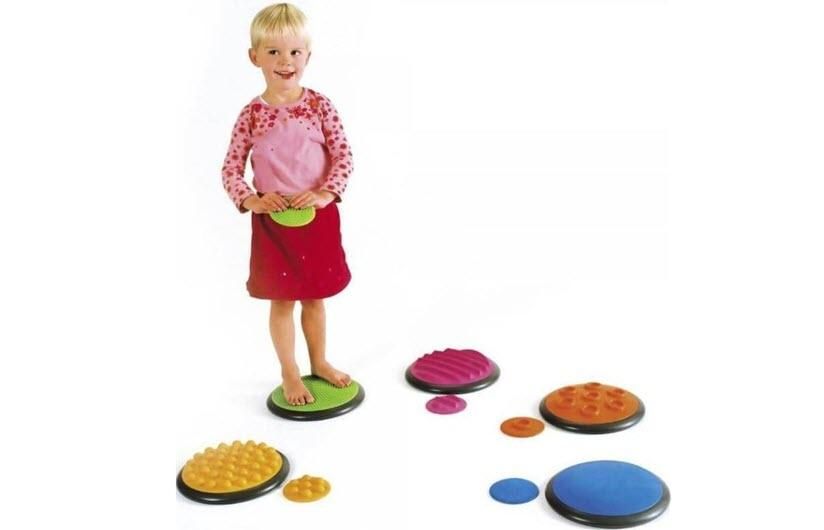
Conflict resolution
Reaching the cooperative stage of play does not mean that children will never experience conflict when they play, in fact, playing cooperatively often creates bountiful opportunities for little ones to practice their budding conflict resolution skills.
As conflict arises, children must learn to effectively communicate the problem and to brainstorm compromises and solutions that are acceptable and workable for all parties involved.
Cooperative play is the final stage of play and represents your child’s ability to collaborate and cooperate with other children towards a common goal.
Children often reach the cooperative stage of play between 4 and 5 years of age after they have moved through the earlier five stages of play. You can foster cooperative play by setting up your home environment in a way that gives your child the tools and toys they need to create cooperative games.
Children learn through play and, as they play cooperatively with other kids, your child will learn essential life skills that they’ll use now and as they grow!
When Does It Happen, and How Can You Encourage It?
Written by WebMD Editorial Contributors
Reviewed by Dan Brennan, MD on October 25, 2021
In this Article
- What Are the Stages of Play?
- Benefits of Cooperative Play
- How to Encourage Cooperative Play
Cooperative play is when children play together with shared goals. They may agree on rules and organize their play. It's the most complicated of the six stages of play.
They may agree on rules and organize their play. It's the most complicated of the six stages of play.
What Are the Stages of Play?
In 1932, sociologist Mildren Parten identified six stages of children’s play. All kids develop differently, so there are no set ages for each type of play.
Unoccupied play. This is the first stage and prepares your baby for the others. Unoccupied play happens when your child experiences the world through their senses. They explore the world around them without any sort of organization. You may notice your baby picking up an object and chewing on it before throwing it down and moving on to another one.
Solitary play. Your child is engaging in solitary play when they play on their own without paying attention to others. Your child is exploring, mastering new skills, and preparing to play with others.
Onlooker play. You may think your child is feeling lonely or left out if you notice them sitting back and watching other children.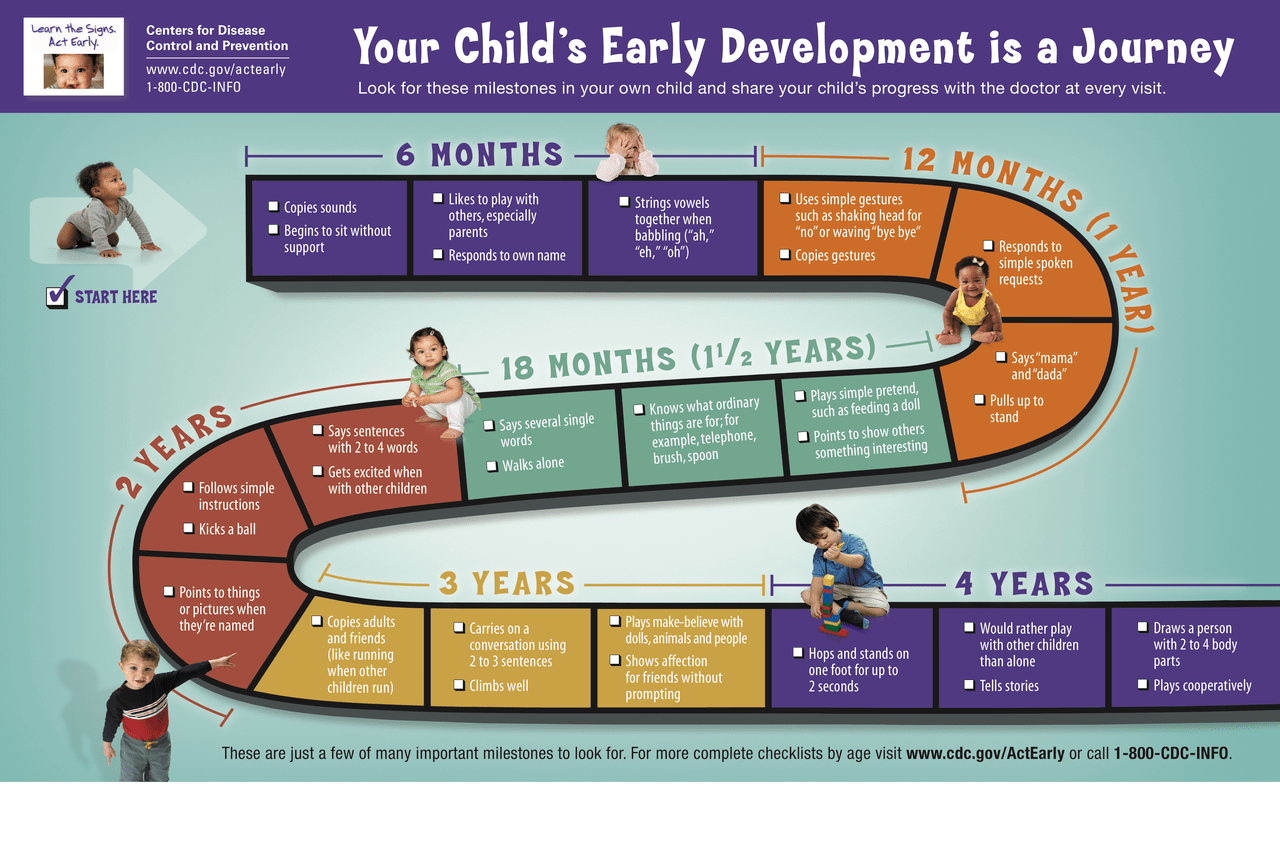 But your child is learning a lot by watching during this stage. This is a normal part of play development. Your child is learning about social rules and relationships as well as different ways of playing.
But your child is learning a lot by watching during this stage. This is a normal part of play development. Your child is learning about social rules and relationships as well as different ways of playing.
Parallel play. When your child is playing near another child but not with them, they're engaging in parallel play. There is no interaction. At this stage, your child is still getting ready to play with other children. They’re still practicing skills and building up to cooperative play.
Associative play. This is when your child starts to show interest in other children as playmates. They’re starting to practice what they've learned in the earlier stages of play. Children in this stage may all be playing in the same area and interacting with each other. But they aren't organizing their play around a common goal.
Cooperative play. In this final stage, your child is working with other kids toward a shared goal. Children will have rules about how to play and assigned roles. There may be a lot of arguing as they learn to share, take turns, and negotiate.
Children will have rules about how to play and assigned roles. There may be a lot of arguing as they learn to share, take turns, and negotiate.
Benefits of Cooperative Play
Play is an essential part of your child's healthy development. Some of the benefits of cooperative play include:
- Improved language skills
- Improved attention
- Self-regulation
- Better peer relationships
- Learning to work with peers
- Adapting to the needs of others
- Learning to compromise
- Learning to resolve conflicts
- Improved physical development
- Developing problem-solving skills
How to Encourage Cooperative Play
Getting your child to play cooperatively isn't always easy. The key to success is giving each child a role so they have to work together. Here are some tips for encouraging cooperative play at home:
Plant a garden. Let your child and their siblings or friends plan a small garden.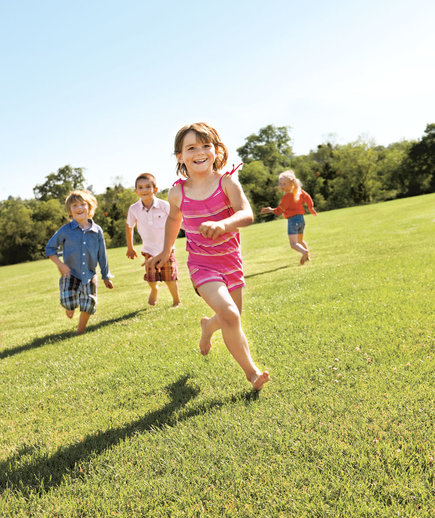 They'll have to work together to decide what to plant and where to plant it. Encourage them to take on different roles. Be sure to point out everyone's contribution when the plants start growing.
They'll have to work together to decide what to plant and where to plant it. Encourage them to take on different roles. Be sure to point out everyone's contribution when the plants start growing.
Create an animal hospital. Let your children drag out all of their stuffed animals and set up a veterinary clinic. Give them a clipboard, paper, and crayons to add writing practice to their game. The children can take turns being the veterinarian, the pet owner, the receptionist, and maybe even the pet.
Put on a play. Bring out the dress-up clothes and let your kids put on a play. They can act out a classic fairy tale or their favorite modern book. Deciding who plays which role will give them lots of practice in negotiating and cooperating.
Have a parade. Making their own musical instruments will give your kids a chance to practice their creativity. Marching in a parade with their instruments will encourage them to work with their friends toward a common goal.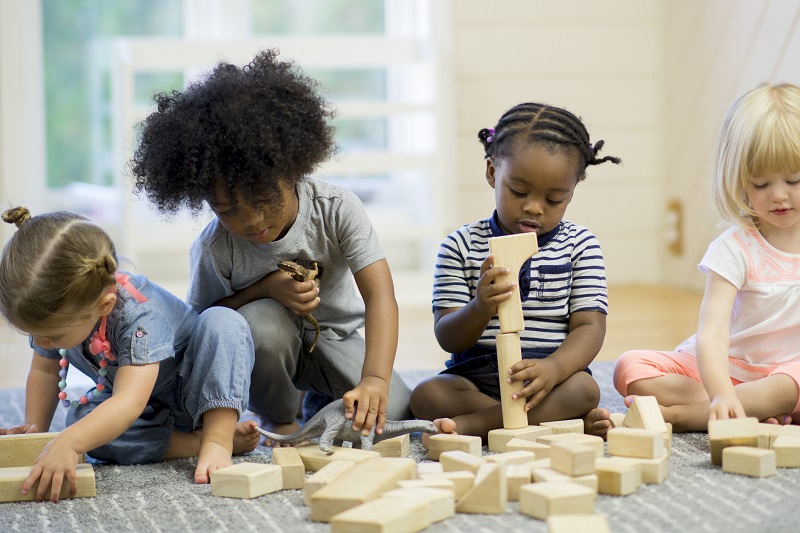
Joint family games for children and parents
Internet access makes it possible to get many different cartoons, clips, games and applications in one moment. Parents do not notice how children are drowning in gadgets. But for a child, a live game is also important, since this is one of the main moments of his development, as well as the main activity. The article will talk about what kind of joint games exist for children and parents, and why parents should participate in them.
Family games with children and parents: benefits and types
Playing with a child is not only a fun way to spend time with the family. This is also a great impetus to its development, because in the process of playing, kids develop many skills and abilities:
- Motor skills, sensory and spatial perception.
- Social and communication skills, oral speech.
- Ability to express oneself, use fantasy.
- Independence and curiosity.
- Dexterity, speed, intelligence.
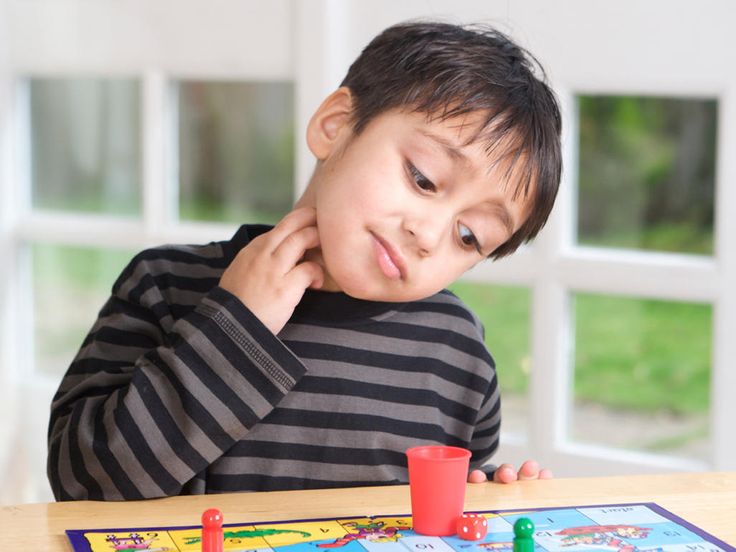
- Memory, attention and other physical and psychological qualities.
In addition, playing together helps to establish contact with the child. When a toddler only interacts with gadgets and their toys, they may start to feel lonely and distant. This can negatively affect closeness in the family. By engaging in activities with your child and giving them enough attention, you help your child build a sense of respect, worth, and simply show them that they are a valued member of the family.
The game helps the child to build communication more correctly, and especially to resolve conflict situations. During the game, you may have various controversial situations. By expressing your opinion, assigning roles and establishing contact, you help your child develop important social skills and adapt more easily to society, because in this way you give him a useful communication experience.
The most important thing is the emotional mood. The game is always a fun activity, so by playing games together, you will help your kid relieve stress after a hard day at school or kindergarten, and also just get emotional release and a long-term positive charge.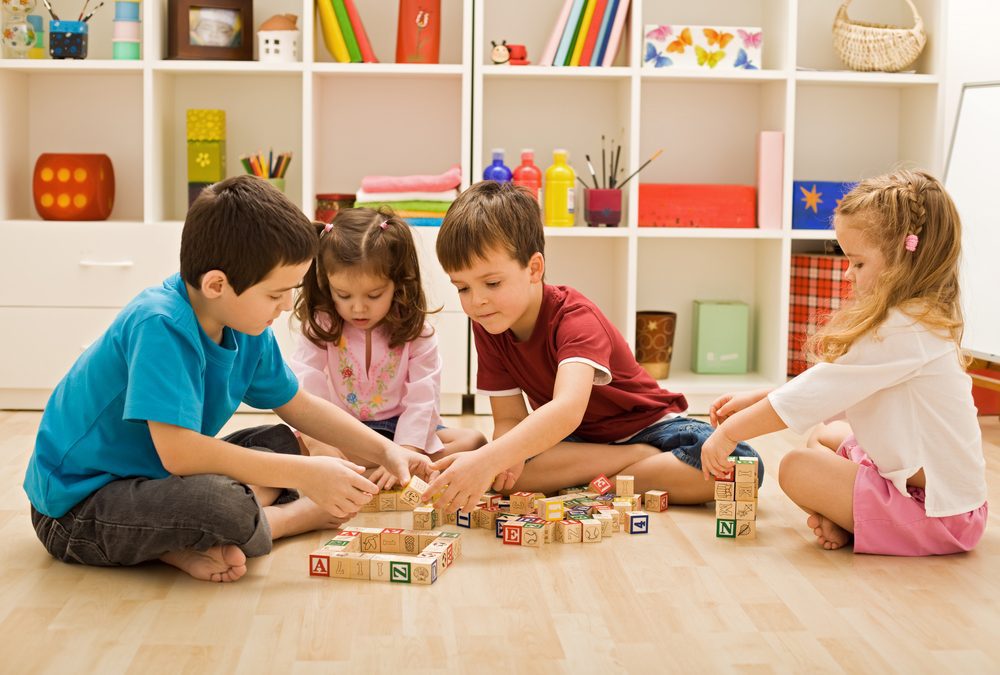
There is an unlimited number of different games, the only limit is your imagination and desire to spend time with your child. All of them can be divided into main types:
- Funny games. Every child wants to be loved and noticed. By playing different fun games, you give the baby the opportunity to feel the joy of communicating with parents and doing joint activities. It can be sports, and board games, outdoor activities, or just fun conversations and jokes.
- Educational games. This type is most relevant for preschool children. It is during this period that the child receives the baggage of the necessary knowledge, skills, and also develops his mental and physiological qualities. Educational games are aimed at the comprehensive development of the child and his improvement from all sides - movement skills, memory, attention, counting and reading, etc.
Why parents should play with their children
The main reason is the attention that every child needs. It is through him that the baby understands that you love him and accept him as a full member of the family. The main feature of the baby is that he takes any attention. For example, if you replace positive attention with negative attention, like: “How many times do I have to tell you!”, “Don’t you understand?” etc., the child will even demand it. Many psychologists and educators have noticed more than once that attention is an important social need of every person.
It is through him that the baby understands that you love him and accept him as a full member of the family. The main feature of the baby is that he takes any attention. For example, if you replace positive attention with negative attention, like: “How many times do I have to tell you!”, “Don’t you understand?” etc., the child will even demand it. Many psychologists and educators have noticed more than once that attention is an important social need of every person.
In addition to attention and signs of love, the main task of the child and parent playing together is to satisfy the baby's need for communication. Psychologist M. I. Lisina notes that: “... in communication itself, an adult, turning to children and responding to their call, makes it possible to experience the sweetness of consolation, for the first time to discover the joy of mutual understanding, incomparable satisfaction from empathy, from a sense of community, the coincidence of one’s own opinions and assessments with the views of a wise and much more experienced older person.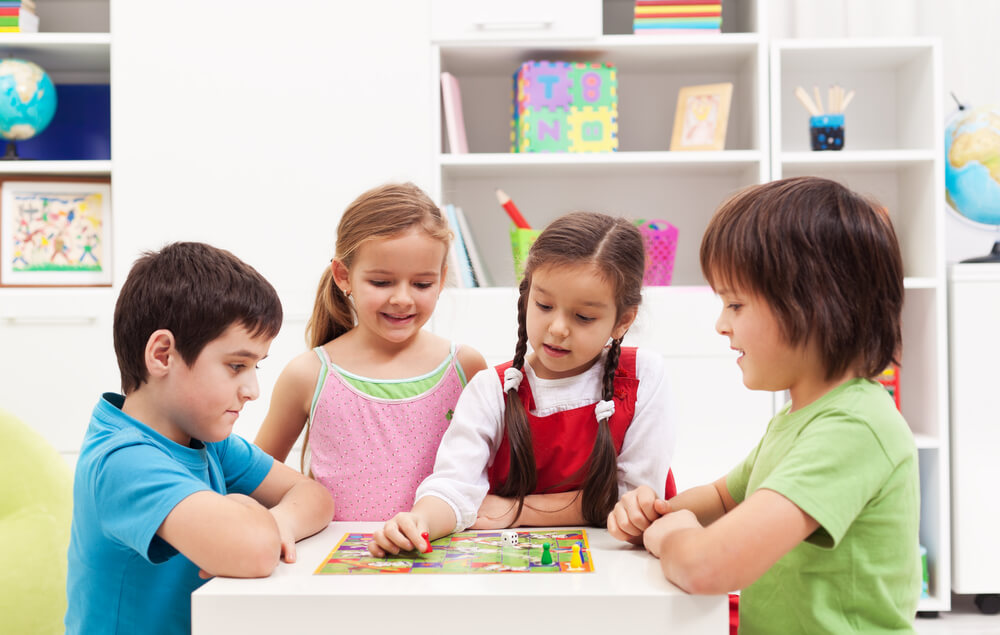
“It is in play that the personality of the child is most fully manifested.” - S. T. Shatsky. This suggests that playing together also helps you learn about your baby's personality development, find and eliminate problem areas, and help your child overcome various kinds of difficulties. All this will be clear in the process of watching the game, which in turn will allow you to become closer to the baby, build trust and understanding with him.
Well, no matter how diverse the virtual world is, it will not be able to replace a loving parent for a child and will not give him the necessary attention, support and assistance in development.
Ideas for joint games for children and parents
It is important not only to know and understand the needs and preferences of your child, but also to see his problem areas that require elaboration or more accurate diagnosis. And already based on these factors, you can proceed to the choice of a joint game. Of course, it is better to try all possible options with the child so that the baby’s activity is interesting, varied for him, and you can consider him from all sides.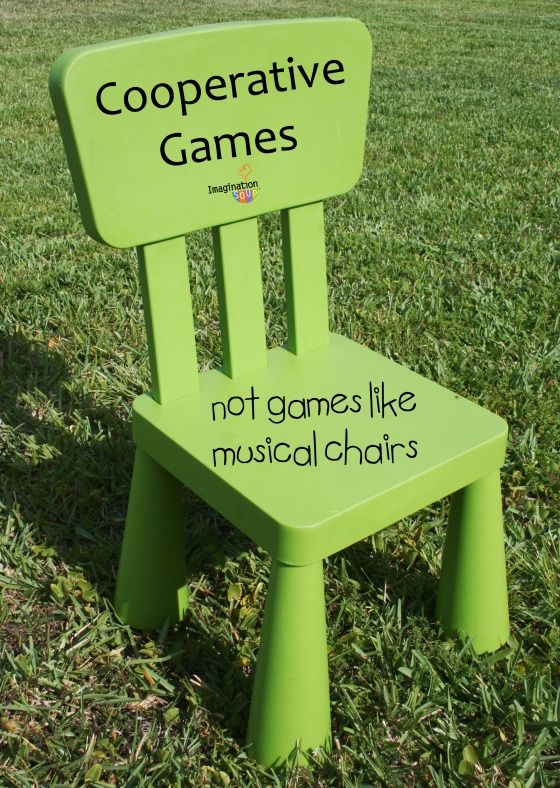
Role play
Role play is very useful for a child. It is she who helps him develop important social skills. These are emotions, and cognitive abilities, and oral speech, and just the ability to explore the world. By organizing a role-playing game, you help your child train attention, self-control, and also become more deeply imbued with processes, characters, activities that are interesting for him, etc. The main thing is that the child will enjoy the process itself, since the result is far from the main part of a role play.
Depending on the age of the child, there are several main points for organizing a joint role-playing game:
- 1-2 years old. At this age, all games are based on the child's usual activities - walking, eating, sleeping, etc. Pay attention to how babies repeat all these actions with their favorite toys - feed them, dress them, bathe them, rock them. When organizing a joint game with a baby, you must take this feature into account and build an appropriate scenario.

- 2-3 years. The child develops stable oral speech, the ability to control, understand and correctly express their emotions. All actions in the game, as a rule, are accompanied by comments and are carried out according to the planned plan within the framework of the topic of interest. For example, the baby no longer just takes care of the doll, but also builds dialogues with it, gradually complicates the actions (not just rocking, but preparing the bed, reading a fairy tale).
- Up to 4 years. Here, the environment has a great influence on the game. Most of the games at this age are based on the events that the baby could see in movies, cartoons or real life. An expanded vocabulary, the ability to "play" with intonation, the concept of the time of day, the year make the game more meaningful and varied. An important role is also played by abstract thinking that arrived in time - any object can become a toy.
- 5-6 years old. As the child grows older, with the all-round development of the child, the role-play becomes more difficult.
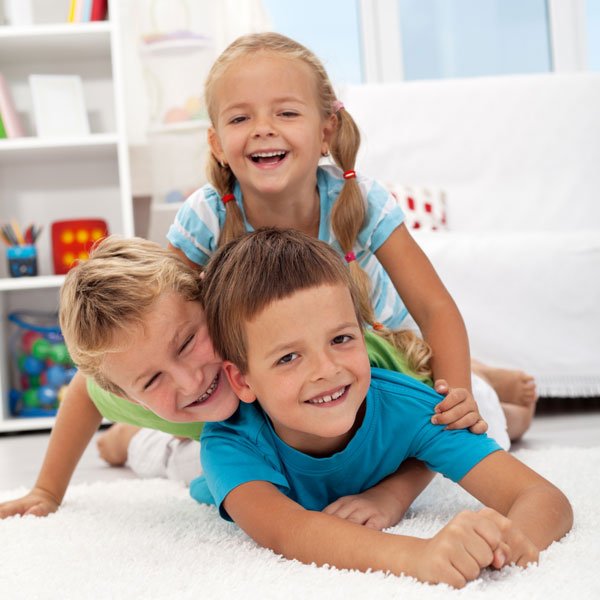 Many characters may already be involved in it, the story may have prerequisites and a likely continuation or end, creative shades appear. Your baby will no longer want to just play in the store. But playing out a shopping trip with the whole family - from planning a shopping list to leaving the store, will already be much more interesting for the baby.
Many characters may already be involved in it, the story may have prerequisites and a likely continuation or end, creative shades appear. Your baby will no longer want to just play in the store. But playing out a shopping trip with the whole family - from planning a shopping list to leaving the store, will already be much more interesting for the baby.
For role-playing, you can use anything you can think of. You can buy different costumes, play sets that consist of different items, designers, figurines of people and animals, and much more.
Let's take a look at some examples of products that are great for parent-child role play of any age.
This section contains goods for organizing a puppet theater. All of them are designed with children in mind, so they are completely harmless to your baby. Arrange a joint performance, distributing roles, helping the baby to know the world around him, as well as to establish contact with you.
With the Food in the Basket play set, you can play out several situations: a shop, a reception or a restaurant. Your child will quickly learn the names of products, as well as get acquainted with the features of a number of professions.
Your child will quickly learn the names of products, as well as get acquainted with the features of a number of professions.
Sports games
Many experts recommend introducing a child to sports from early childhood, because physical education is an equally important aspect of the proper development of a child. By playing sports with your baby, you will help him improve his coordination, responsiveness, speed, agility, activity, as well as critical thinking and introspection.
Like any other games, sports can be divided into several categories:
- Exercises and ball games. They have a positive effect on the physical development of the child - the mobility of the joints increases, the muscles of the arms and legs develop, coordination, plasticity. Playing ball, the child makes a large number of body movements in one moment, which gives a significant impetus to the overall development of the nervous system.
- Collective ball games help in the development of the will, create conditions for improving the skills of analysis, planning and decision-making, communication with team members.
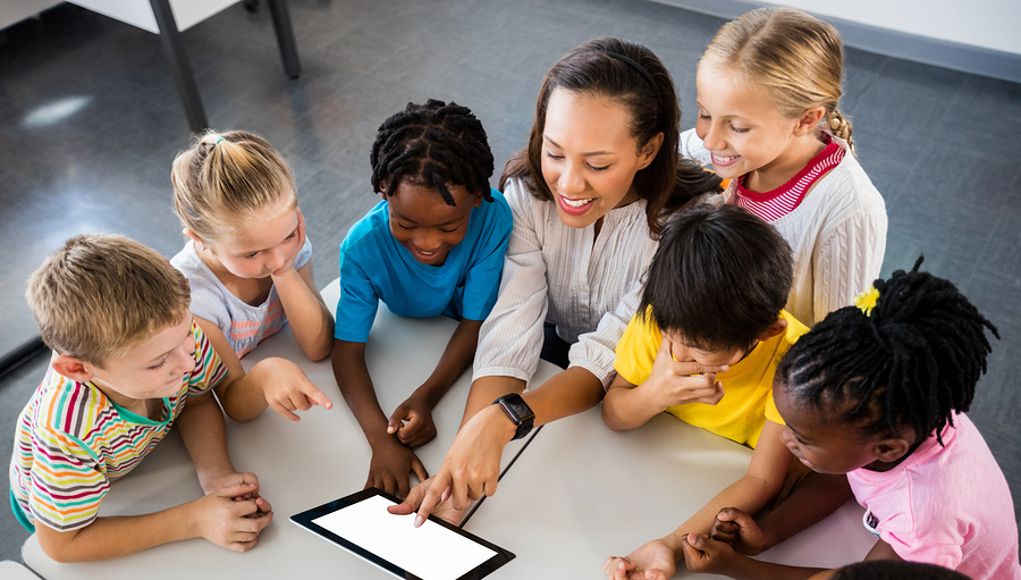
- Physical exercises and outdoor games. Any equipment can be used for them - hoops, skittles, balls, badminton sets, frisbees and much more. It is important to understand that this is a game, not a sport. Your baby should want to play on his own, and should not feel discomfort or fatigue.
You can draw the child's attention to the game and make the process more interesting by introducing various characters. Also, by allowing your baby to use fantasy and imagination, you give him the opportunity to get physical development in a simple way, without straining and not forcing yourself to perform certain actions (unlike simple sports exercises).
In this section you can find a large number of sports equipment for all ages and features. Various shells, balls and other sports equipment are perfect for both playing and for the physical training of the baby.
Board games
With age, the child begins to show interest not only in outdoor games and active physical activity. Developing arbitrary memory and attention, the baby strives for a different knowledge of the world - through reading, watching movies, listening to fairy tales, studying in kindergarten and other ways. In this case, it's time for board games. All of them help in several aspects at once:
Developing arbitrary memory and attention, the baby strives for a different knowledge of the world - through reading, watching movies, listening to fairy tales, studying in kindergarten and other ways. In this case, it's time for board games. All of them help in several aspects at once:
- Rapprochement with the family.
- Possibility not to get bored in bad weather.
- Development of memory, auditory and visual perception, as well as the ability to concentrate on one object (on the game itself).
Playing a board game with the whole family, you:
- Create a positive atmosphere in the family circle, endow the child with positive emotions.
- Keep in touch with each other.
- Improve your child's cognitive skills, help him solve various problems, improve his logic and cognitive abilities.
- Help your child to relax, reduce stress.
- Prevent nervous system disorders. The mental activity that is triggered by a board game prevents the risk of a host of cognitive disorders, from Alzheimer's disease to dementia and other diseases.
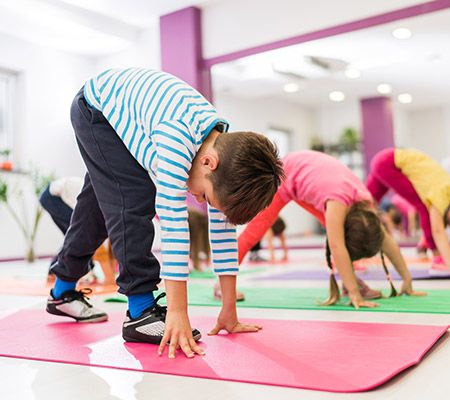
Among the huge variety of board games, the kid may be interested in walking games with chips, cards with riddles and puzzles, and just traditional board games like checkers, dominoes and others.
In the board games section you can find a large number of games for all ages. From simple "walkers" to real checkers, dominoes and other popular games. There are also educational games. The game "Mathematical Pyramid" will help in mastering the account, "Pyramid of Letters" - will teach the kid to write words with unstressed vowels correctly.
Experiments
Every child constantly asks “What?”, “How?”, “Why?”. Toddlers are extremely interested in knowing the world around them in all its manifestations. Any action or object causes a number of questions and misunderstandings in the child, which the baby wants to know as soon as possible.
Experiences and experiments are one of the most interesting ways to get to know the world. They help:
- Develop curiosity.
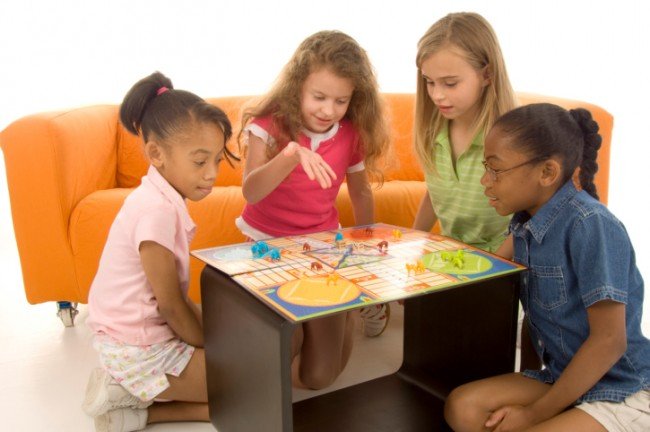
- Expand the child's horizons and knowledge.
- Improve thinking, logic, intelligence.
- Establish cause and effect relationships.
- Develop perseverance and observation.
- Learn to draw conclusions and analyze the progress and results of activities.
In addition, by conducting joint experiments with your child, you will also be able to establish contact and give him due attention.
It is not necessary to create certain conditions for setting up experiments. You can conduct simple home experiments on mixing non-toxic and non-combustible materials, or use ready-made kits that include all the necessary elements and the equipment required for them.
We have a large number of kits on our website for safe yet impressive experiments. With a set of "Crystal fluffies. Flower" you can experience how to grow a beautiful crystal flower and impress your child. The kit contains everything you need to conduct the experiment, as well as detailed instructions.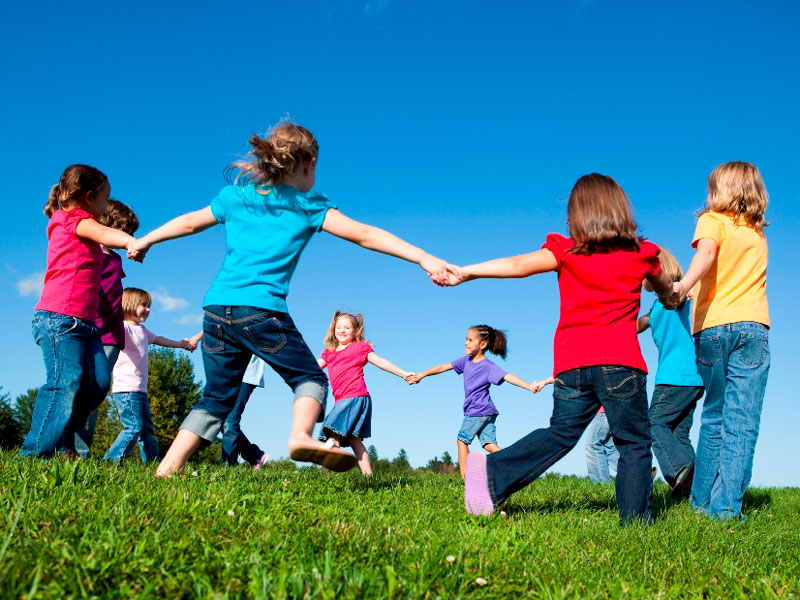
Games for toddlers up to 3 years old
At an early age, a child needs much more attention. After all, it is at this time that all the skills are laid, and the acceptance of the family takes place. This is the time to show your baby that he is loved, thereby forming a strong bond with the child.
Particular attention at this age should be given to educational games. This will help the baby learn more about the world around him, as well as facilitate his development.
Speech games
Before the age of three, the child begins to actively learn oral speech. The desire for communication and attempts to imitate adults are noticeable from the cradle, when the baby utters sets of unrelated sounds. Active games aimed at the development of speech will help the child adapt to society, as well as help him improve memory, logic and attention.
Speech games can be divided into several areas:
- Games for memorizing letters and sounds.
 Actively develop the speech apparatus and help the child quickly master reading and correct oral speech. Also, with the help of such games, you can detect speech defects and work them out in time.
Actively develop the speech apparatus and help the child quickly master reading and correct oral speech. Also, with the help of such games, you can detect speech defects and work them out in time. - Word games help to expand vocabulary, erudition and memory.
- Games where it is important to give complete answers and build sentences will help the baby learn to correctly and correctly express his thoughts in full.
To do this, there are many different sets that come with everything you need. Bright cards with colorful pictures, as well as simple and understandable symbols attract kids and keep them entertained.
In the section "Developing Board Games for Kindergarten Children" you can find a lot of aids for the development of speech. Each game meets the requirements of the Federal State Educational Standard, and also has a lot of positive feedback from both teachers and parents. All of them are selected taking into account the level of development of the child and his age characteristics.
Also, speech board games can be found in the section "Didactic toys for kindergarten children".
Active games
In early childhood, a child learns to move. He will have to master the gait, jumping, hand movements. By playing active games, you will give your child the opportunity to quickly learn physical skills and improve existing ones. A large number of active and outdoor games are aimed at improving the speed, coordination, agility, and physical endurance of the child.
By playing active games with your child, you act as an example for him and also provide support. The kid will not be so scared and embarrassed to perform certain actions if he knows that he is in the circle of his family, ready to help at any moment.
You can use the good old games that we pass on to each other from generation to generation - catch-up, "Stop the Earth", "The floor is lava" and others, or diversify them with special sets or sports equipment. As a rule, sets include all the necessary equipment, and also contain detailed instructions for the game.
In the sports equipment section, we have a wide range of products focused on the physical development of the baby - toys, sports equipment and other equipment. All this can be used for active games indoors or outdoors.
The ring toss games are perfect for family fun. Throwing rings, the kid will train his dexterity, speed and reaction time. The game has a competitive element that will motivate your child to improve their physical qualities.
Logic games
Logic is one of the most important skills. It is she who helps in solving many everyday problems and issues. It is important at work, in training and in other activities. Therefore, when playing with a young child, do not forget about logic games.
Logic game activates the activity of the cerebral cortex and develops several qualities of the child at once:
- memory;
- attention;
- quick wits.
In the course of a logic game, the moment of rapprochement between the child and the parent is not so important.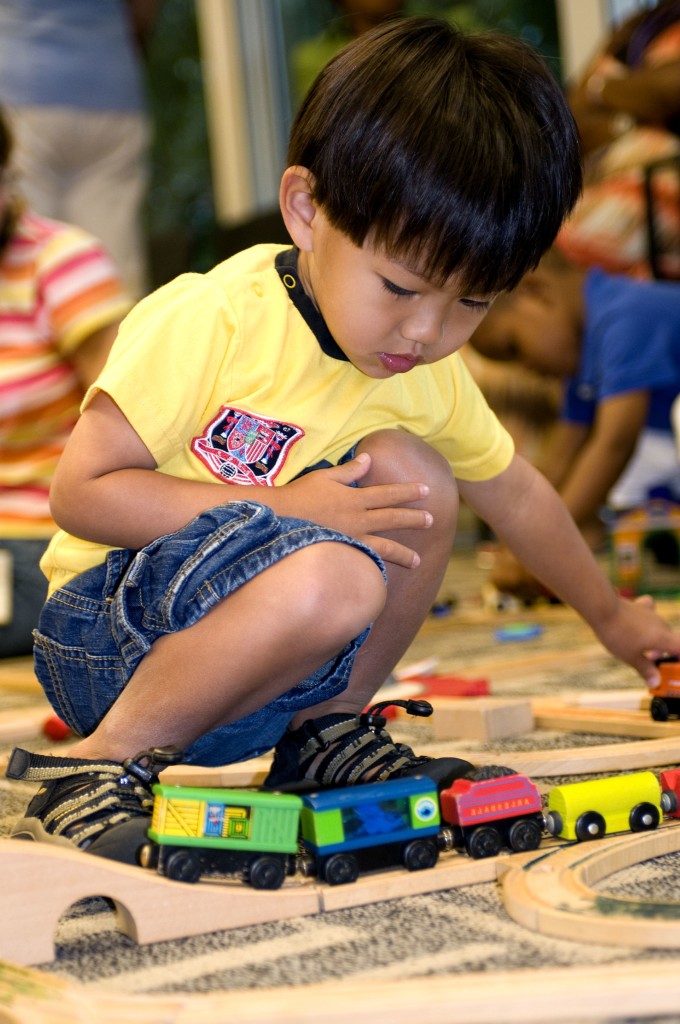 You act as a curator or assistant, pushing the baby to the correct answers.
You act as a curator or assistant, pushing the baby to the correct answers.
Logic games include a lot of board games with cards, as well as different sets for studying counting, reading, memorizing colors and shades, as well as sets aimed at the ability to classify objects, combine and sort them.
A lot of products that are ideal for playing logic games are located in the "Children's educational puzzles" section. You can pick up puzzles on different topics, for different ages and individual characteristics.
In the section "Developing logic games for children" you can find a lot of games with cards and tasks that will allow you to have fun and useful time with your baby.
Creative games
Every child can have a brilliant artist, writer or artist. By creating an environment conducive to creative development, you give the child the opportunity to discover and develop any talent in himself. Creative games are great for this. But when organizing such activities, it is worth remembering that this is not just fun entertainment, but the same development of the child as logical or physical.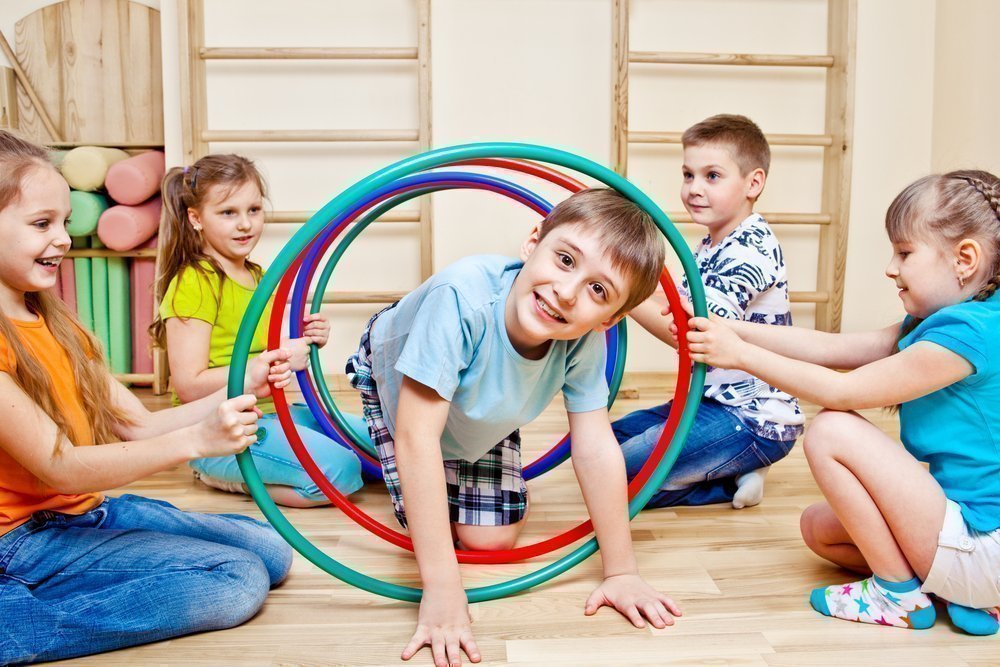
To this end, child psychologists have developed many games and aids that help children and their parents to discover and develop their creative abilities. These include various coloring books, drawing sets, books, etc.
During creative play, you can act as an assistant, thereby helping your child to identify and develop his talent. Also, you can be a participant in the process, thereby getting closer to the baby.
The Flight of Fantasy double-sided easel will help you discover and develop your child's talent. Copy each other's drawings, come up with your own stories or just improvise, developing the child's creativity.
You can see this and other creative products in the "Children's Art Sets" section.
Helpful tips for parents
By following these rules, you will be able to have fun and benefit your baby and other family members:
- When starting a game, it is important to remember that all attention should be paid to it.
 You should not be distracted by extraneous matters. Show your child how important it is for you to spend time together and help him.
You should not be distracted by extraneous matters. Show your child how important it is for you to spend time together and help him. - Eliminate criticism, condemnation and comparison. Remember that this is a game, even if it requires certain results.
- Agree with the baby about the safety of the game - no one harms themselves and others, as well as surrounding objects.
- The game must be continuous from start to finish. If during the game you realize that you do not like it, stop or change it only if the child comes to it himself.
- The child is a full participant in the game process. He has the right to his opinion and decision-making during the game. Even if they don't match yours.
- Generous positive evaluation with detailed comments will help to overcome conflicts, as well as give the child a strong motivation to play itself, as well as to develop and improve the positive points you voiced.
- Strictly observe distributed roles.
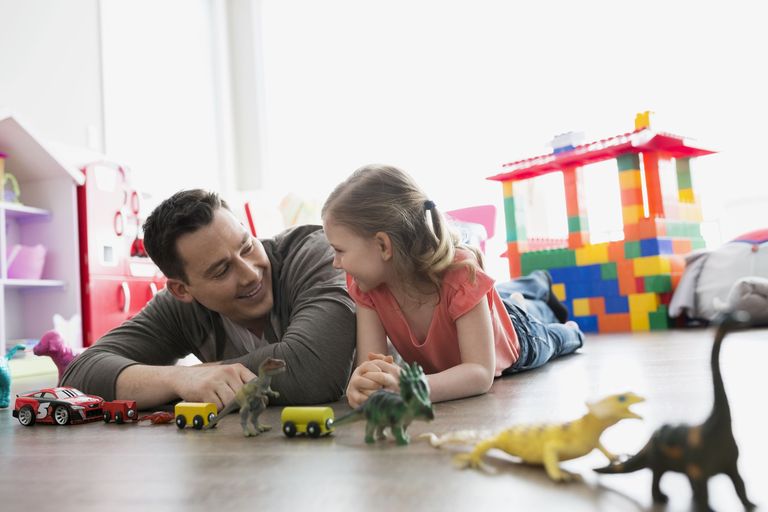
- If your baby screams or frightens you during play, exaggerate your fear. If the child is happy, share the joy with him. Join the game and vividly demonstrate your emotions and involvement in the process.
- The child may use play to defuse accumulated resentment, fear or anger. In this case, you should not interfere with him. Let the baby fully discharge.
- Set the time frame for the game. Agree with the baby about specific days and hours of joint play. This will make it possible to avoid phrases like “I don’t have time”, “I can’t” and others that greatly affect the child. Accustom him to responsibility and point to the previously agreed conditions.
Nowadays, there are a lot of ways to spend time with your child. From the above, we can say that the game is a laborious and multifaceted process, which is designed not only to entertain the child and his parents, but also to provide an opportunity to develop many skills.
Parent-Child Play Interactions
- Details
- Category: Expert advice
Parental Counseling
Parent-Child Play Interactions
A huge role in the development and upbringing of the child belongs to the game - the most important type of children's activity.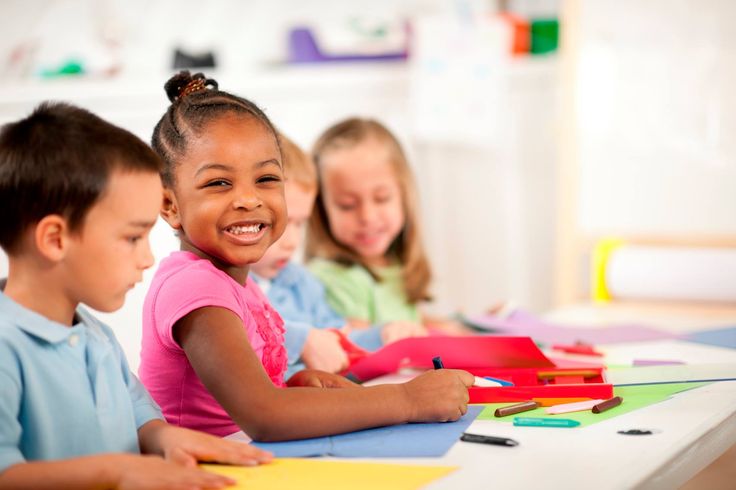 V.A. Sukhomlinsky emphasized that “play is a huge bright window through which a life-giving stream of ideas about the surrounding world flows into the spiritual world of a child. The game is a spark that ignites the flame of inquisitiveness and curiosity.
V.A. Sukhomlinsky emphasized that “play is a huge bright window through which a life-giving stream of ideas about the surrounding world flows into the spiritual world of a child. The game is a spark that ignites the flame of inquisitiveness and curiosity.
In the course of the game, the child’s spiritual and physical strengths develop: his attention, memory, imagination, discipline, ease, etc. In addition, the game is a kind of preschool way of assimilating social experience.
Interesting games create a cheerful, joyful mood, make the life of children complete, satisfy their need for vigorous activity. Even in good conditions, with good nutrition, the child will develop poorly, become lethargic if he is deprived of an exciting game. The task of an adult is to help the child organize the game, make it fun.
In order to prepare a child for the future, so that his unreal life is full and happy, play with your children!
It’s great if you play with your child, it’s even better if you know how to play with him (don’t teach him, but “infect” him with creativity, the desire to solve all kinds of problems and even come up with new ones.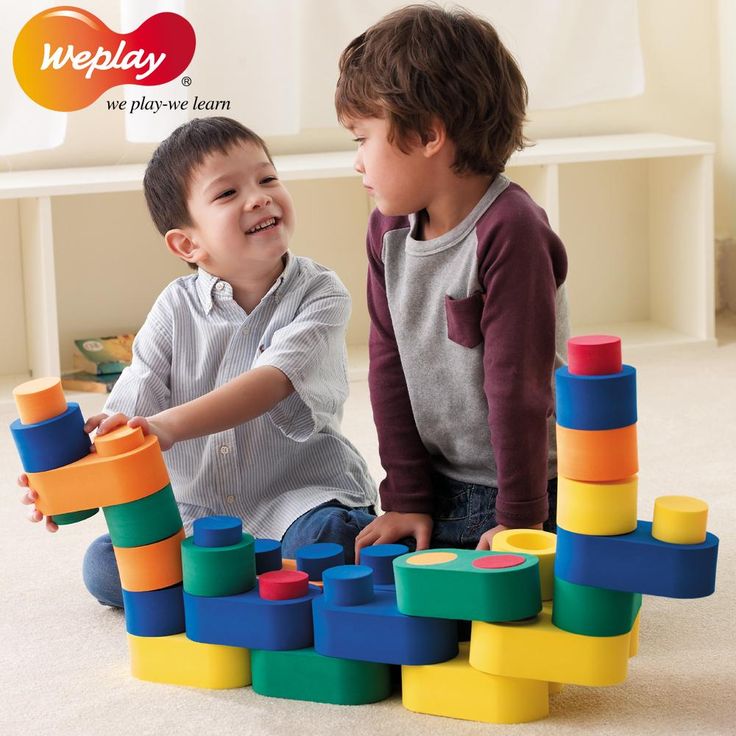 But in order to “infect” a child, you must first “get sick” to get carried away with games
But in order to “infect” a child, you must first “get sick” to get carried away with games
Family and kindergarten are two educational phenomena, each of which gives the child a social experience in its own way. But only in combination with each other they create optimal conditions for the entry of a small person into the big world.
The preschool period is the most important in a child's life, everyone knows this and develops the baby from birth. The game is the leading activity of a preschool child and occupies a central place in the life of a preschooler. The game is a universal way of life of the child, his vital need and is the main means of education. From here, the strategy of the game interaction of parents with the child should be determined.
Parents know that children love to play, encourage their independent play, buy toys. But not everyone thinks about the educational value of children's games. They believe that the game is for fun, for the entertainment of the child.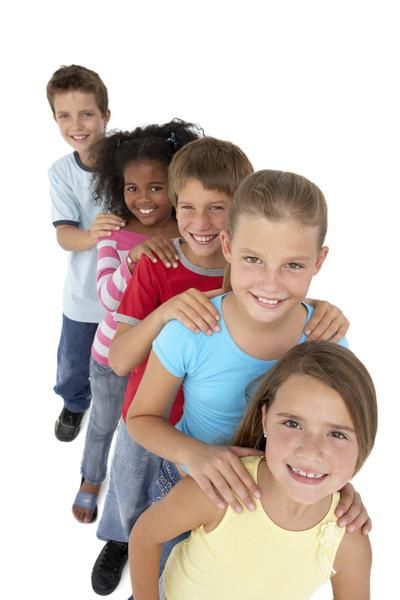 Others see in it one of the means of distracting the baby from pranks, whims, filling his free time so that he is in business.
Others see in it one of the means of distracting the baby from pranks, whims, filling his free time so that he is in business.
The same parents who constantly play with children, watch the game, appreciate it as one of the important means of education.
For a preschool child, the game is the leading activity in which his mental development takes place, the personality as a whole is formed.
The life of adults interests children not only with its external side. They are attracted by the inner world of people, the relationship between them, the attitude of parents to each other, to friends, to other relatives, to the child himself. Their attitude to work, to surrounding objects.
Children imitate their parents: the manner of dealing with others, their actions, labor activities. And they transfer all this into their games, thus consolidating the accumulated experience of behavior, forms of attitude.
With the accumulation of life experience, under the influence of training, education - children's games become more meaningful, diverse in plots, themes, in the number of roles played, participants in the game.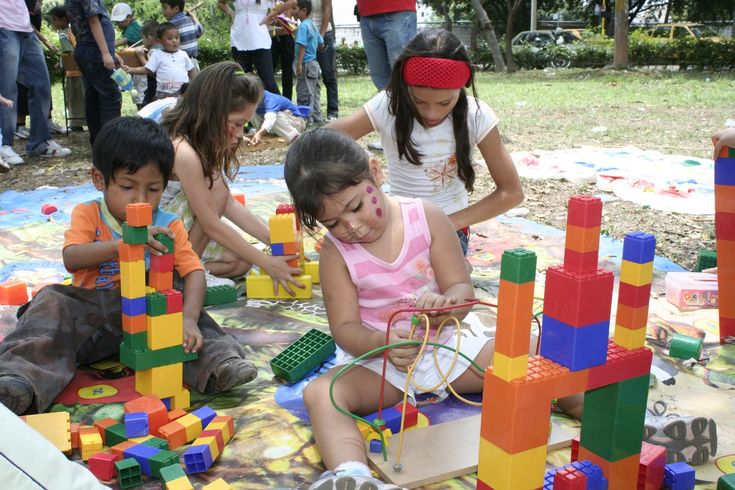 In games, the child begins to reflect not only the life of the family, the facts that are directly perceived by him. But also the images of the heroes of fairy tales read to him, stories that he needs to create according to the idea.
In games, the child begins to reflect not only the life of the family, the facts that are directly perceived by him. But also the images of the heroes of fairy tales read to him, stories that he needs to create according to the idea.
However, without guidance from adults, children even of older preschool age do not always know how to play. Some have little ability to apply their knowledge, they do not know how to fantasize, others, being able to play on their own, do not have organizational skills.
It is difficult for them to negotiate with partners, to act together. One of the older members of the family, joining the game, can become a link between the children, teach them to play together. Host partners can also play together. Usually, each imposes his theme of the game on the other, striving to be in the lead role. In this case, you can not do without the help of an adult. You can play the main role in turn, an adult can take a secondary role. Joint games of parents with children spiritually and emotionally enrich children, satisfy the need for communication with loved ones, strengthen faith in their own strength.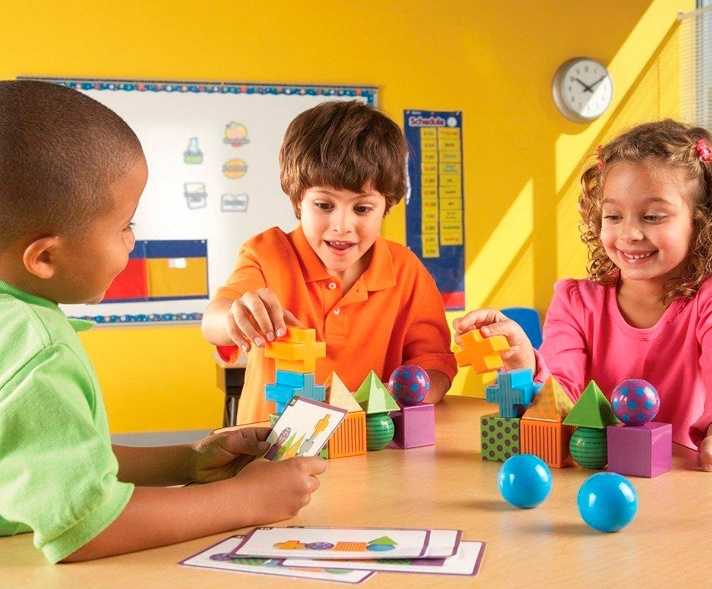
The authority of father and mother, who know and can do everything. It grows in the eyes of children, and with it grows love and devotion to loved ones. It’s good if a preschooler knows how to start a game on his own, pick up the right game material, mentally build a game plan, negotiate with his game partners, or be able to accept his plan and jointly carry out his plan. Then we can talk about the ability of a preschooler to play. But these children also require attention and a serious attitude to their games. They sometimes need to consult with their mother, father, grandmother, older brother, sister. In the course of the game, ask, clarify, get approval of their actions, actions, thus affirming themselves in the forms of behavior.
Younger preschoolers aged 2-4 not only can't play together, they can't play on their own. The kid usually aimlessly carries the car back and forth, not finding a greater use for it, he quickly abandons it, demands a new toy. Independence in the game is formed gradually, in the process of playing communication with adults, with older children, with peers.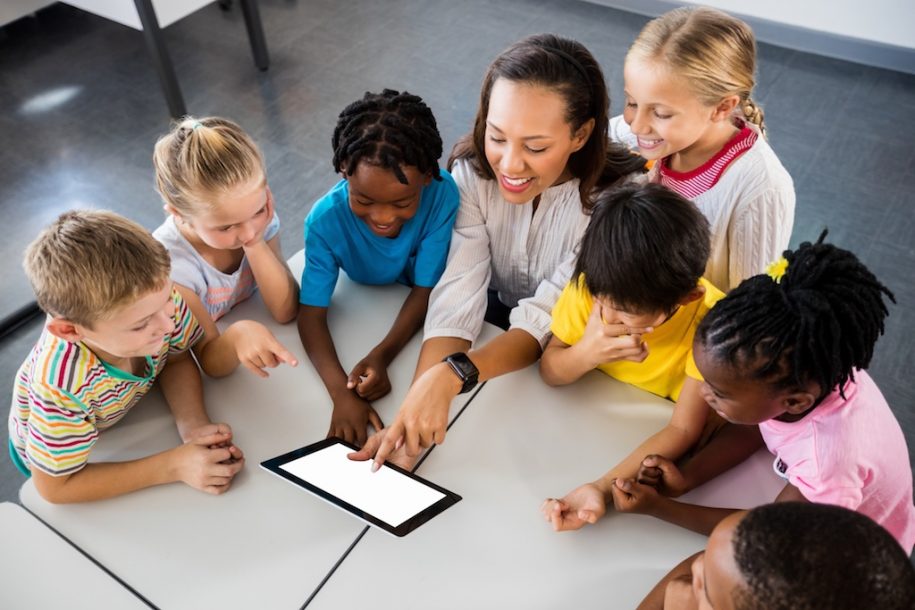 The development of independence largely depends on how the child's life is organized in the game. To wait until he begins to play on his own means deliberately inhibiting the development of a child's personality.
The development of independence largely depends on how the child's life is organized in the game. To wait until he begins to play on his own means deliberately inhibiting the development of a child's personality.
One of the important pedagogical conditions that contribute to the development of the game of a small child is the selection of toys by age. For a baby, a toy is the center of the game, a material support. She pushes him to the topic of the game, gives rise to new connections, causes a desire to act with her, enriches sensory experience. But toys that adults like do not always have educational value for children. Sometimes a simple shoebox is more valuable than any clockwork toy. The box can be a trailer for a car in which you can transport cubes, soldiers, bricks, or arrange a stroller for dolls in the box.
Older preschoolers appreciate toys made by their parents. Children constantly need to have pieces of fur, fabric, cardboard, wire, wood on hand. From them, children make the missing toys, rebuild, supplement, etc.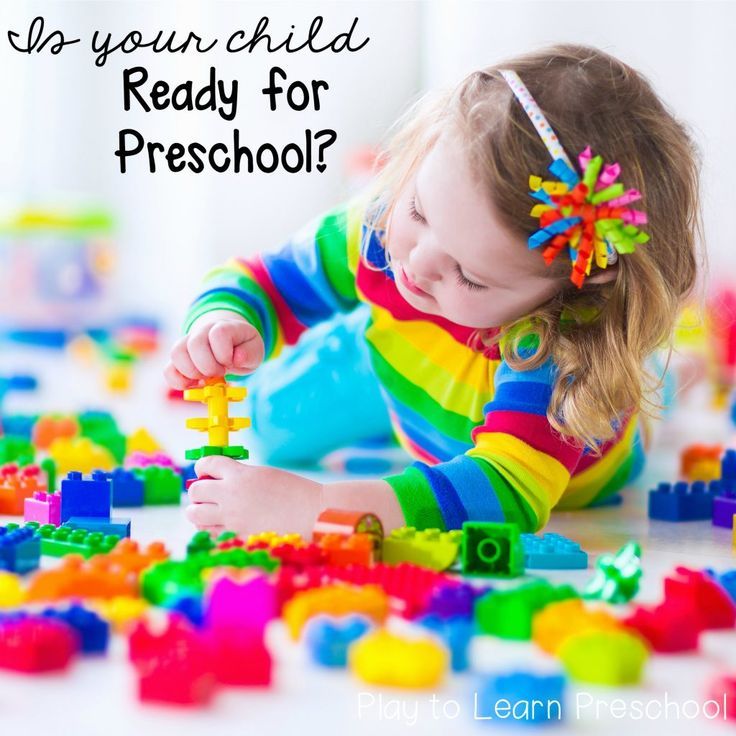 , which, undoubtedly, expands the playing possibilities of children, fantasy, and forms labor skills.
, which, undoubtedly, expands the playing possibilities of children, fantasy, and forms labor skills.
In the child's play economy, there should be different toys: plot-shaped (depicting people, animals, objects of labor, everyday life, transport, etc.), motor (various wheelchairs, strollers, balls, skipping ropes, sports toys), building kits, didactic (various turrets, nesting dolls, board games).
When purchasing a toy, it is important to pay attention not only to novelty, attractiveness, cost, but also to pedagogical expediency. Before you make another purchase, it's a good idea to talk to your son or daughter about what kind of toy he needs and for what game. Often girls play only with dolls, so they are often deprived of the joy of playing such games in which ingenuity, resourcefulness, and creativity are formed. Girls play with dolls either alone or only with girls. With boys, they have no common interests and no prerequisites for the emergence of friendly relationships between children.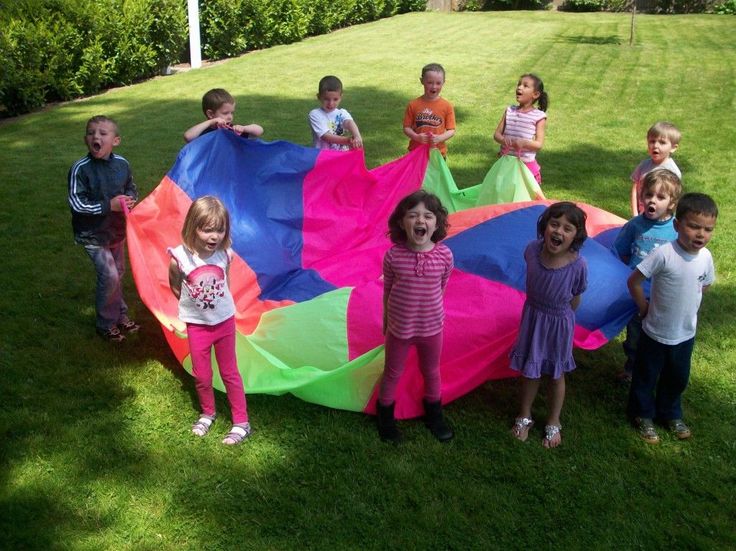 Boys usually play with cars, with children's weapons. Such toys also limit the circle of communication with girls. It is better when we are adults, we will not divide toys into “girls” and “boys”.
Boys usually play with cars, with children's weapons. Such toys also limit the circle of communication with girls. It is better when we are adults, we will not divide toys into “girls” and “boys”.
If a boy does not play with a doll, he can buy a bear, a doll in the form of a boy, a baby, a sailor, Pinocchio, Cheburashka, etc. It is important that the baby gets the opportunity to take care of someone. Soft toys depicting people and animals delight children with their attractive appearance, evoke positive emotions, a desire to play with them, especially if adults from an early age are taught to take care of toys and keep them neat. These toys turn out to be the first helpers of children in acquiring the experience of communicating with the surrounding children and adults. If a child does not have sisters and brothers, then toys are in fact his partners in games, with whom he shares his sorrows and joys. Games with building materials develop in children a sense of form, space, color, imagination, constructive abilities.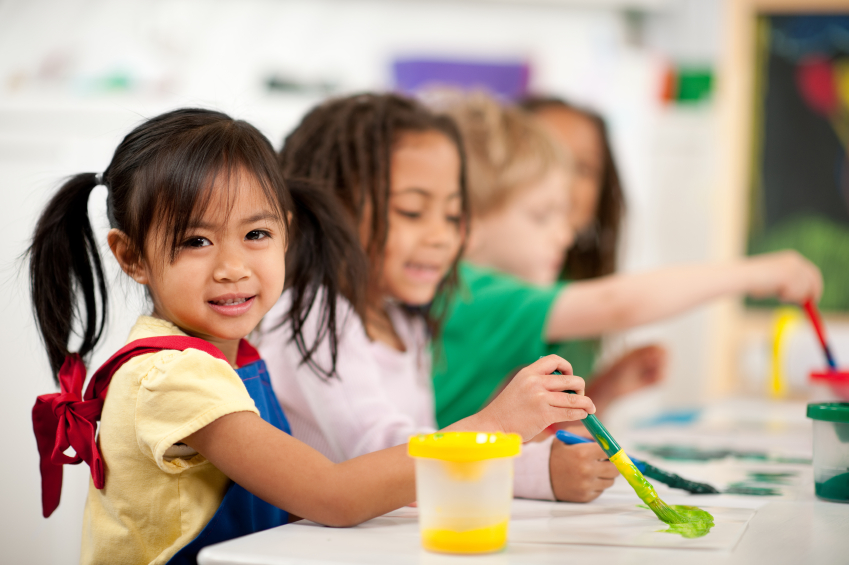
Sometimes adults need to help build this or that building, think together what parts are needed, what color, how to fix it, how to supplement the missing structures, how to use the building in the game.
Games: lotto, dominoes, paired pictures, open up the opportunity for children to enjoy the game, develop memory, attention, observation, eye, small muscles of the hands, learn endurance, patience.
Such games have an organizing effect, since they offer to strictly follow the rules. It is interesting to play such games with the whole family so that all partners are equal in the rules of the game. The little one also gets used to the fact that he needs to play, observing the rules, comprehending their meaning.
Very valuable are the games of children with theatrical toys. They are attractive with their external bright appearance, the ability to "talk".
The production of flat figures from cardboard and other materials by the whole family enables children to play out familiar works of fiction on their own, to invent fairy tales.
The participation of adults in children's games can be different. If a child has just bought a toy and knows how to play with it, it is best to let him act on his own. But soon the experience of the child is depleted. The toy becomes uninteresting. Here the help of the elders is needed, to suggest a new game action, to show them, to offer additional game material to the existing game. When playing with a child, it is important for parents to follow their plan. The even, calm, friendly tone of an equal partner in the game inspires the child with confidence that they understand him, they want to play with him.
If a preschooler, especially a small one, has a play corner, then from time to time he should be allowed to play in the room where the family gathers in the evenings, in the kitchen, in the grandmother's room, where there is a new environment, where everything is interesting. The new environment gives rise to new game actions, plots.
The child is very happy with the minutes given to him by his parents in the game.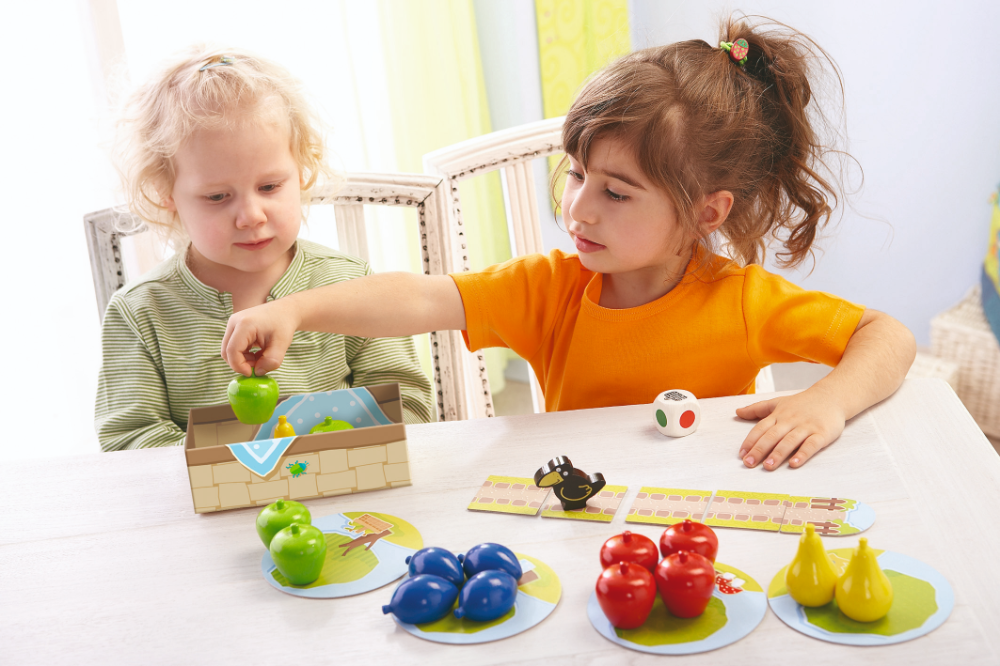 Communication in the game is not fruitless for the baby. The more precious minutes fall in the company of people close to him, the greater the relationship, common interests, love between them in the future.
Communication in the game is not fruitless for the baby. The more precious minutes fall in the company of people close to him, the greater the relationship, common interests, love between them in the future.
PARENT ADVICE
1. The game should bring joy to the child and the adult. Each success of the baby is a mutual achievement - both yours and his. Rejoice in this. Joy inspires the baby for future successes. Watch how happy children are when they manage to please or make them laugh.
2. Interest the child, but do not force him to play. The game should continue as long as it is enjoyable for everyone. Refrain from hurtful remarks “Oh, you are stupid!” etc. If it doesn’t work out, switch his attention to another matter.
3. If there is more than one child in the family, there are younger children, then enliven the game with a fascinating fairy tale or story, toys, dressing up, etc. Think up! Fantasize!
4.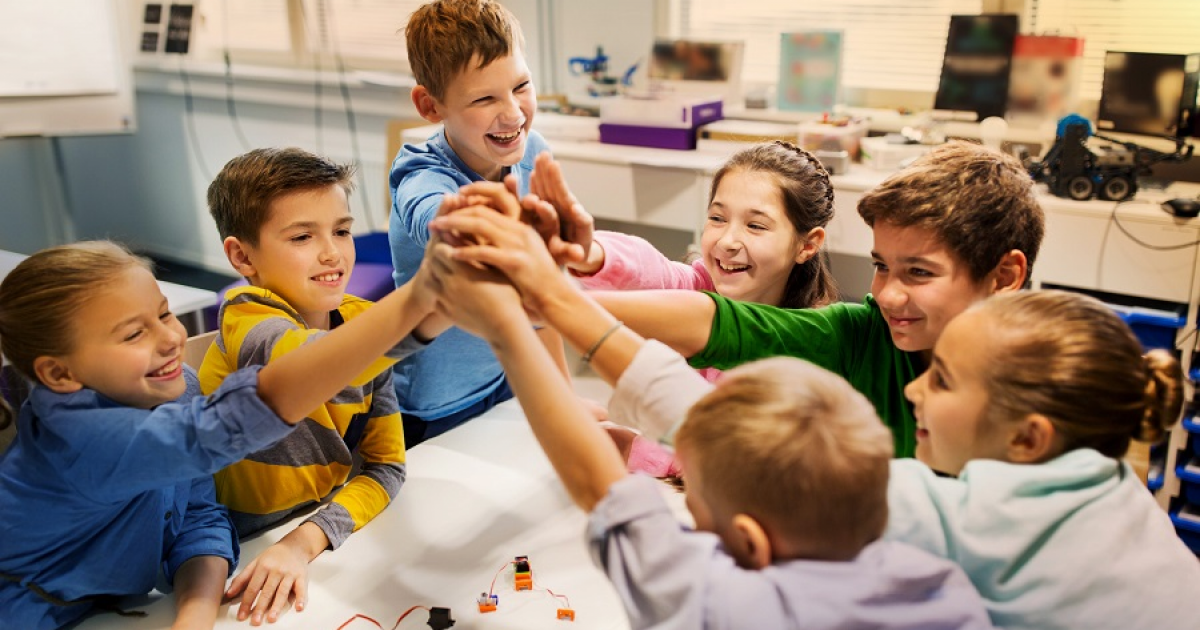 The more a quality is developed in a baby, the more it craves manifestation. A strong child wants to run, fight, play outdoor games more, a weak kid does not like this.
The more a quality is developed in a baby, the more it craves manifestation. A strong child wants to run, fight, play outdoor games more, a weak kid does not like this.
5. Praise more for success!
6. Do not restrain the child’s motor activity, create a relaxed atmosphere in the game so that you can jump with delight, and do somersaults on the rug on the “joys”, and fly to the ceiling on daddy’s hands.
7. Know how to honestly admit defeat in games. It's hard to come up with a big reward for a child. Do not be afraid that your authority will suffer in this case.
Goals of the proposed games:
1. Raise in children the desire to participate in the game
2. Develop ability; create an image using facial expressions, gestures, etc.; improvise.
3. Encourage cooperation.
4. Learns to communicate with a partner in the game.
5. Expand skills, knowledge, skills.
6. Enrich your horizons.
7. To instill friendliness, humanity, activity.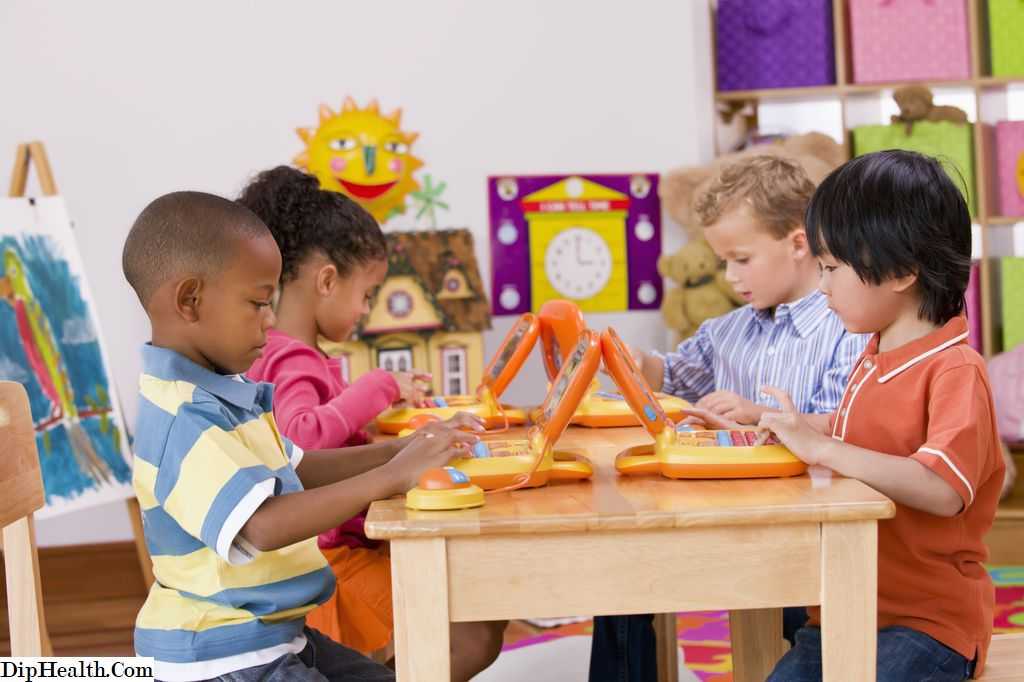
Children are the flowers of our life. And the future of the child depends on how we educate them and how much love we invest in them. Games also play an important role in education. Unfortunately, not all parents understand and know how to do this. We offer 13 tips on how to play with your child correctly.
1. Safe play. When choosing toys, you need to think about the development of the child's senses and carefully check if the objects have sharp edges or small parts that the baby can get hurt or choke on.
2. Safe environment. So that the joy of games is not overshadowed by anything, you need to take care in advance of creating a safe environment for the child by examining the room through the eyes of the baby and adapting the environment to the child, and not the child to the environment. Let's rearrange the vase from the top shelf, see if something is lying around on the floor, remove knick-knacks from accessible places, tightly block access to wires and connectors. And no cups of hot coffee!
And no cups of hot coffee!
3. Praise your baby for every achievement. Praise develops a child's positive self-esteem, teaches you to rejoice in your successes! And never compare a child with other children, so that complexes do not develop. Every child is special and develops at their own pace!
4. Help your baby love his body. Pay attention to games aimed at ensuring that the baby knows and loves his body. If the baby sees with what love his parents caress him, he begins to consider his body as something good and beautiful. Such games include all bodily contacts, for example, stroking arms and legs, kissing, gentle massage, various touches and air baths.
5. Offer your child age-appropriate toys and games. With a baby (a child under 6 months old), you need to play at a slow pace so that he has time to follow the movements. The first toys - rattles should be with a soft sound. Any primary color is suitable - red, yellow, etc., but bright enough to attract the baby.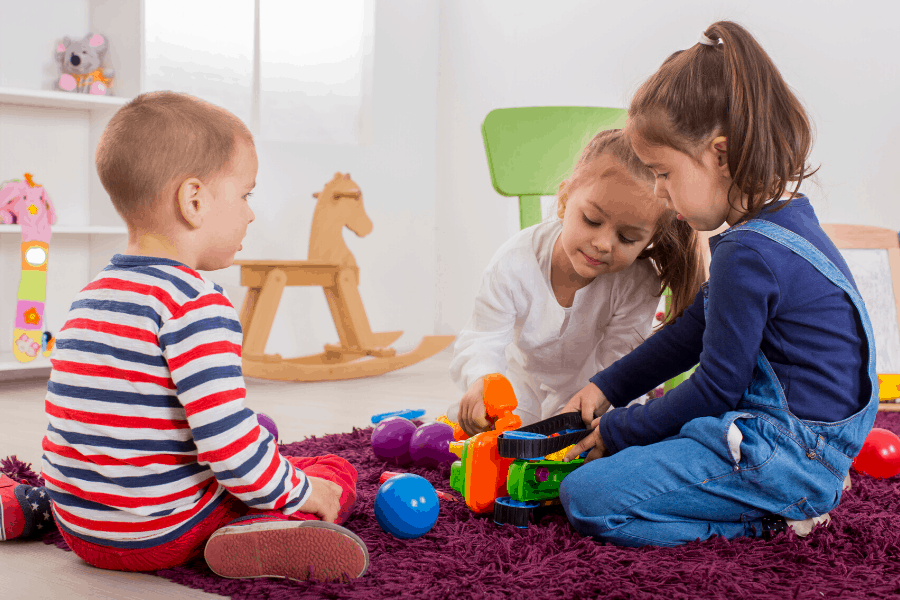 When the child grows up (up to 1 year old), he himself will become involved in the game with great interest and enthusiasm, and the choice of toys will expand. One of the golden laws of the game - in order to promote the development of the baby and encourage him to try, toys and games must be constantly complicated as they are mastered.
When the child grows up (up to 1 year old), he himself will become involved in the game with great interest and enthusiasm, and the choice of toys will expand. One of the golden laws of the game - in order to promote the development of the baby and encourage him to try, toys and games must be constantly complicated as they are mastered.
6. Develop independence. When playing with your child, try to balance the time when he plays with you and with himself. The first develops communication skills, the second teaches the baby independence.
7. Communicate. It is important to talk with a newborn from the very first days of his life, so that the child gradually learns to pronounce individual sounds, syllables, words and phrases. Calling things by their names, reproducing the sounds they make, repeating the babbling of the baby himself, singing songs is very important - this lays a solid foundation for the development of speech and communication skills.
8. Call a spade a spade.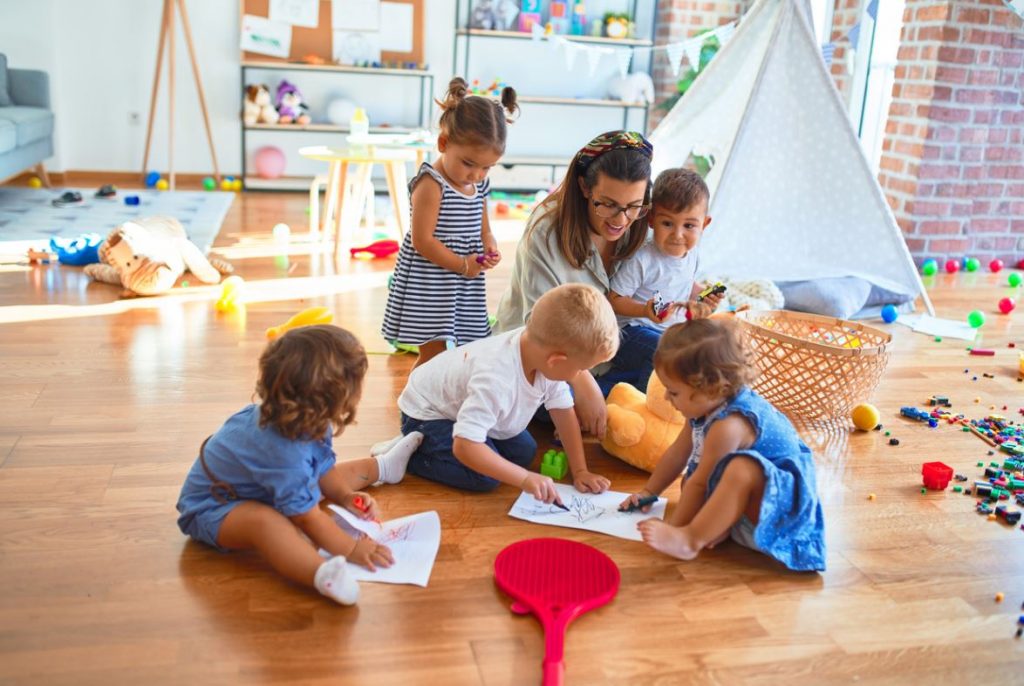 Make excursions around the house, tell what you see - so the baby learns a lot about the world around him, about his place in it, learns the simplest actions and their names. This is how the foundations for the development of speech are laid!
Make excursions around the house, tell what you see - so the baby learns a lot about the world around him, about his place in it, learns the simplest actions and their names. This is how the foundations for the development of speech are laid!
9. Air baths. They help the child to temper and develop, to study and master the movements of the body. Before undressing the baby, make sure that the temperature in the room is at least 23 degrees.
10. Ball. Include rocking the baby on a big ball back and forth, right and left in everyday games. This is how the balance necessary to learn to sit, crawl and walk develops, in addition, the baby learns not to be afraid of heights and trust mom or dad.
11. Feeling safe. It comes through the game of hide and seek - this is how a child understands from the first months of life that a mother can be lost, but she will certainly be found!
12. Toys of different shapes. Cubes, balls, cars, rattles, books - the basis of the games of the first years of life.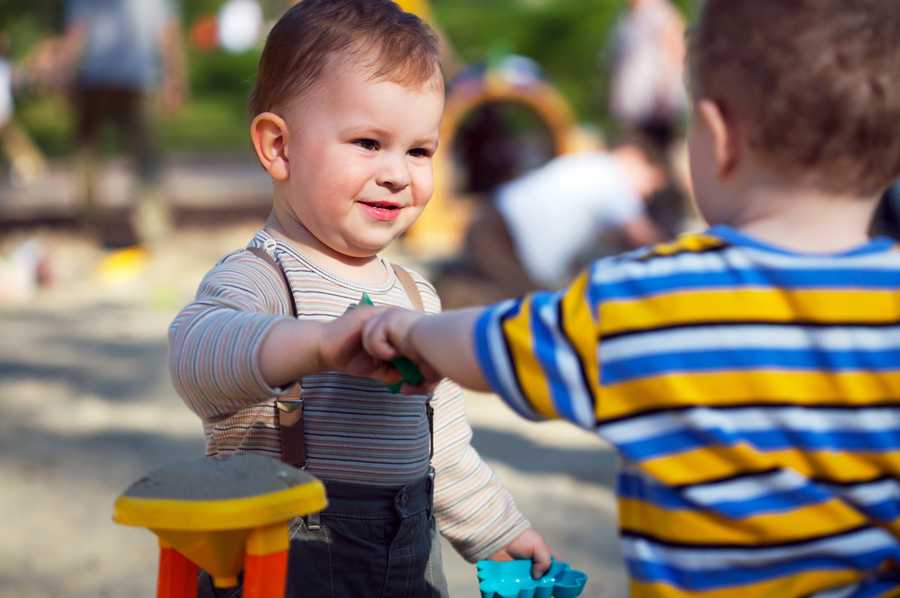 But do not offer the baby too many toys - he will not be able to concentrate and will be confused. The best toys are those that reflect real life and the world around them. It's good if the toy contains a moment of surprise, for example, if it has colored balls inside - this keeps the child's interest and develops the ability to concentrate.
But do not offer the baby too many toys - he will not be able to concentrate and will be confused. The best toys are those that reflect real life and the world around them. It's good if the toy contains a moment of surprise, for example, if it has colored balls inside - this keeps the child's interest and develops the ability to concentrate.
13. Share your emotions. If you're sad, cry! If it's fun, be happy and smile. But accompany any emotions with words - this will teach the baby to recognize different feelings and later call them by their proper names. It should be added that it is the kids under two years old who have not yet learned to pretend like adults and express the most genuine feelings with their emotions and facial expressions.
PARENT AND CHILD PLAY
1. The game "Cold - hot; Right left".
An adult hides a conditional object, and then, with the help of commands like “step to the right, two steps forward, three to the left,” leads the child to the goal, helping him with the words “warmth”, “hot”, “cold”.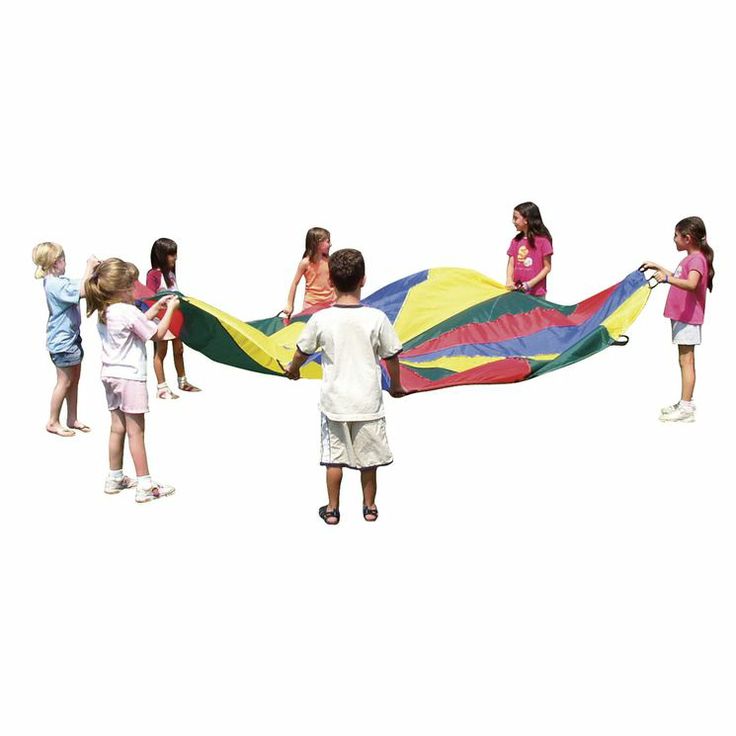
2. The game "Flies - does not fly"
An adult names objects. If the object flies, the child raises his hands. If it does not fly, the child's arms are lowered.
3. The game "What do you hear?".
An adult invites the child to listen and remember what is happening outside the door, outside the window, on the street, then asks to tell what sounds he heard. You can offer to count the sounds heard.
4. The game "Who is the first."
Two ribbons are tied to the back of the chair. One is pulled to the left, the other to the right. An adult and a child, on a signal, begin to twist the ribbons, trying to do it faster and sit on a chair. The winner is the one who spins the ribbon faster and sits on a chair.
5. The game "Pinocchio".
As you know, Pinocchio had a long nose, which really bothered him. By conducting this game, everyone can try themselves in this role. To do this, you need a box of matches, which all the players pass by putting on each other's noses, without the help of hands.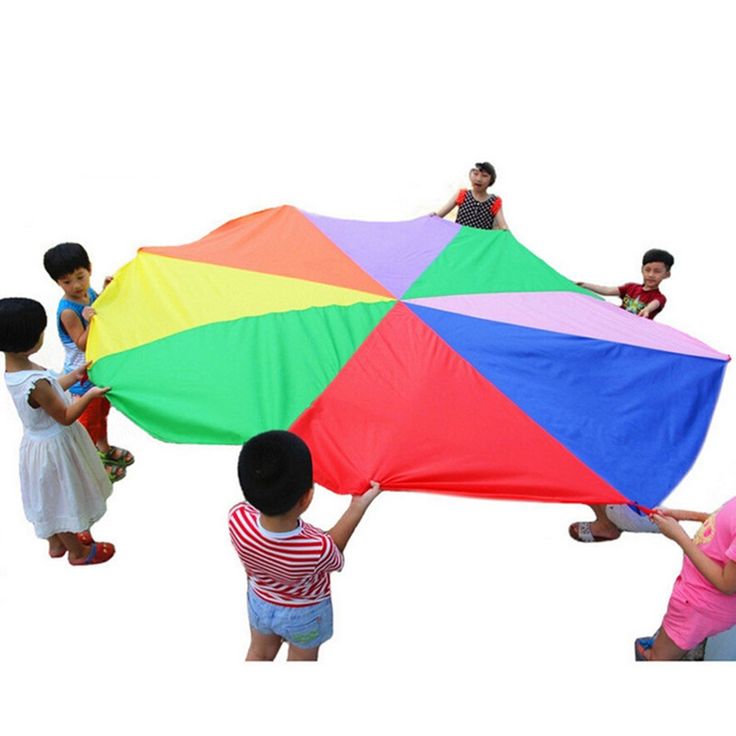 Both adults and children will enjoy playing this fun game.
Both adults and children will enjoy playing this fun game.
6. The game "Say the name."
It is necessary to name, at the request of an adult, female and male names. Names must not be repeated; the one who repeated is out of the game. The one with the most names wins this game.
This game has many options. You can pass each other, some object, and everyone who has the object calls the name.
7. The game "Please."
Task: raise your right hand up, please, raise your left hand too and sit down, please. Clap your hands, please, etc.
8. The game "What color is gone?".
Colored pencils are laid out in front of the child, he is asked to carefully look at them and remember the colors. Then the child closes his eyes, the adult removes one of the objects, asks the child to open his eyes and say; What color pencil is missing?
9. "Alyonushka and Ivanushka".
The players form a circle holding hands. Alyonushka and Ivanushka get out, they are blindfolded. They are inside the circle. Ivanushka must catch Alyonushka.
Alyonushka and Ivanushka get out, they are blindfolded. They are inside the circle. Ivanushka must catch Alyonushka.
To do this, he can call her: "Alyonushka". Alyonushka must necessarily respond: "I'm Ivanushka here."
As soon as Ivanushka caught Alyonushka, others take their place and the game starts all over again.
10. Turtles.
The participants of the game compete who is faster - to the flag "running on all fours with your head back."
11. "Transfer the wounded."
In a half-bent position on the back, a soft toy is carried (hands on the belt) to run to the "hospital".
12. Game "Mirror".
An adult standing in front of the child shows various exercises. The child must repeat correctly (i.e., the adult raises his right hand, the child raises his left, because the image is a mirror image).
13. The game "Magic Snowman".
An adult and a child “sculpt” a snowman, roll snowballs, install them, slap, correct, while discussing their actions aloud.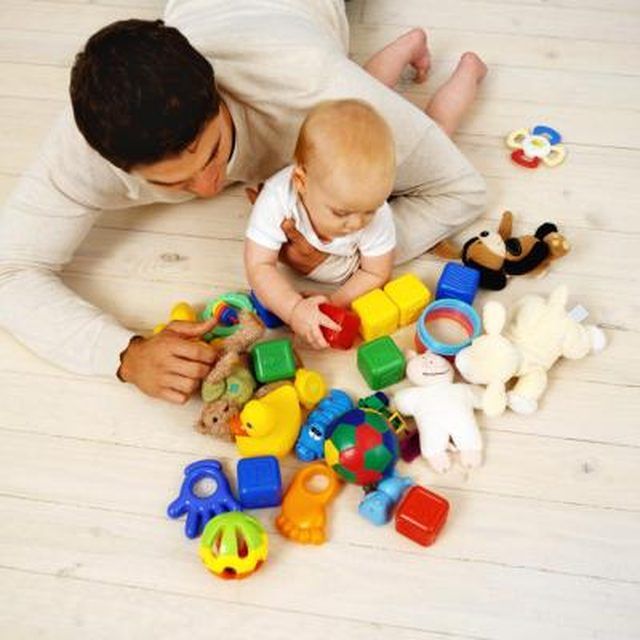 The snowman is ready. The child closes his eyes and says magic words: “1, 2, 3 revive the snowman 4, 5 we will play with you! The child opens his eyes, in the place where the snowman was supposed to stand, it turns out to be an adult. They get to know each other (play any games “I’ll freeze, hide and seek, draw”). At the end of the game, the snowman says: “It’s hot here, I fall asleep and quietly I melt; Blind me tomorrow."
The snowman is ready. The child closes his eyes and says magic words: “1, 2, 3 revive the snowman 4, 5 we will play with you! The child opens his eyes, in the place where the snowman was supposed to stand, it turns out to be an adult. They get to know each other (play any games “I’ll freeze, hide and seek, draw”). At the end of the game, the snowman says: “It’s hot here, I fall asleep and quietly I melt; Blind me tomorrow."
14. Game "Crocodile".
An adult "crocodile" - stretches its arms forward one over the other, depicting a toothy mouth, a child (with other family members) puts their hands into the "mouth". The crocodile with a calm look distracts the players, sings songs, stamps his feet, jumps up and suddenly closes his hands - “mouth”. Whoever gets caught becomes a crocodile.
15. Kangaroo game.
A scarf is tied to the belt of an adult and a child, forming a "bag" of a kangaroo. A cub is put in it - a favorite soft toy. They say the words: "1, 2, 3 jump".